Dublin is a very interesting choice for a European city break. The city has a versatile offer: culture geeks will find here historical Neo-Gothic cathedrals, state museums (free of charge) such as National Gallery, Irish Museum of Modern Art or National Museum; stunning architecture (see the elegant Georgian area around St. Stephens Church). In Dublin you will also find prestigious Trinity College, you can visit the grounds and see the campus on your own or as a part of excursion. Dublin surprised me with an abundance of beautiful parks, in the city center you can have a nice chill after your shopping on Grafton Street in St. Stephens Gardens, if you want to immerse even more into nature you can go to vast Phoenix Park which is located closer to the Heuston Station.
One would miss a lot if skipping the visit to traditional Irish pubs, if you want to learn more about Irish traditional beers and whisky you can book a visit to local distilleries, you will understand how the whisky is produced and you also do some tasting. The most frequented by tourists is Jameson Distillery but you can also go to Teeling Whiskey Distillery or Pearse Lyons Distillery and I’m sure there’s more of them in Dublin’s area (and all around Ireland). Look out for small informative leaflets with tourist attractions, you can find there discount codes for your excursions (also for souvenir shops or entry tickets to some cultural venues). If you are arriving to Dublin by train to Heuston Station you will see in front a large facility of Guiness brewery, Guinness Storehouse also opens its doors to visitors.
Apart of rich liquid offer, I disproved the stereotype that Irish cuisine is monotone and bland, I’m an absolute fan of Irish seafood and their Atlantic chowder fish soup, filling fisherman pie, local mussels and Irish beef-based dishes including simple beef steak or beef burger as well as warming traditional shepherd’s pie.
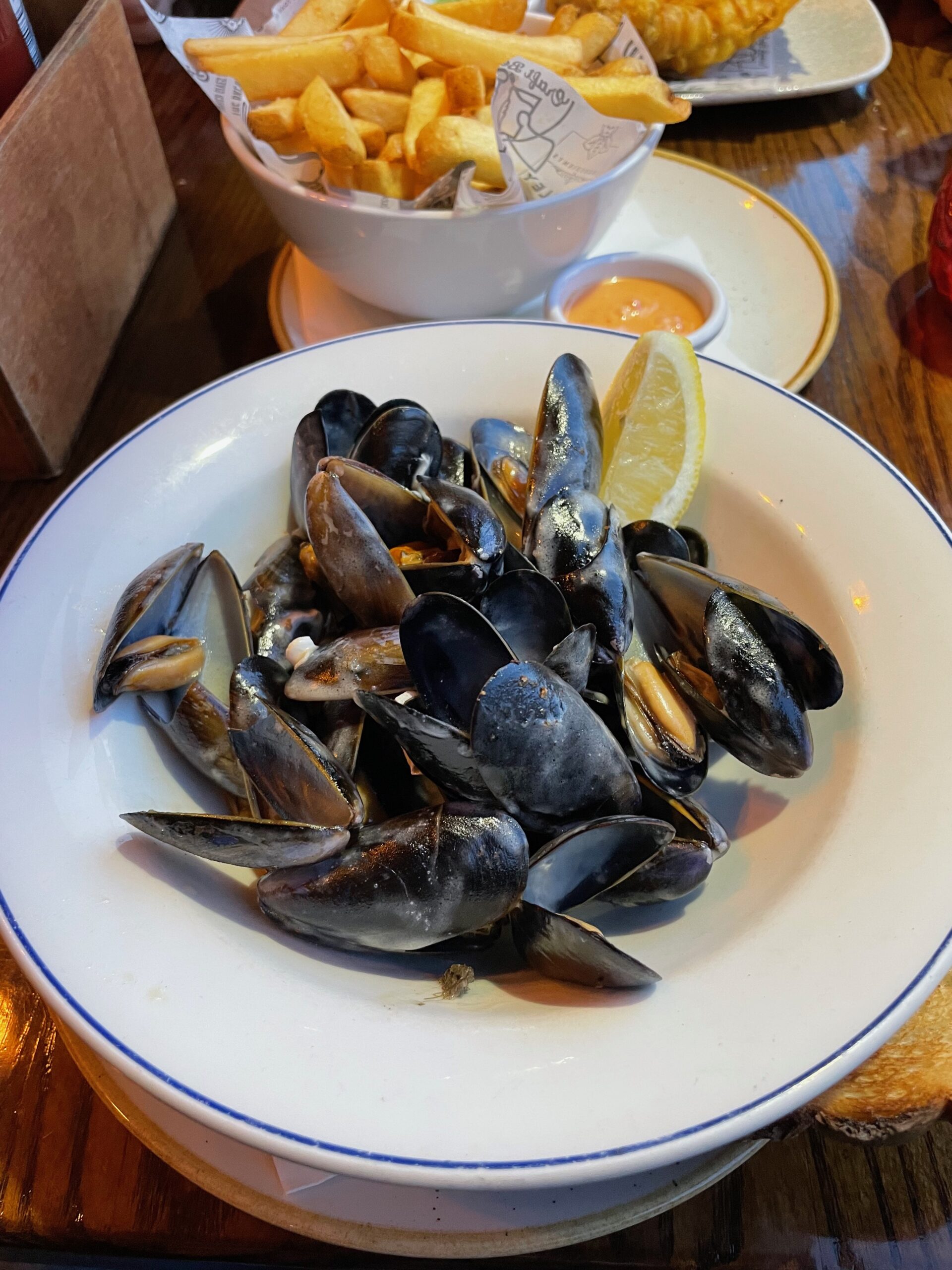 |
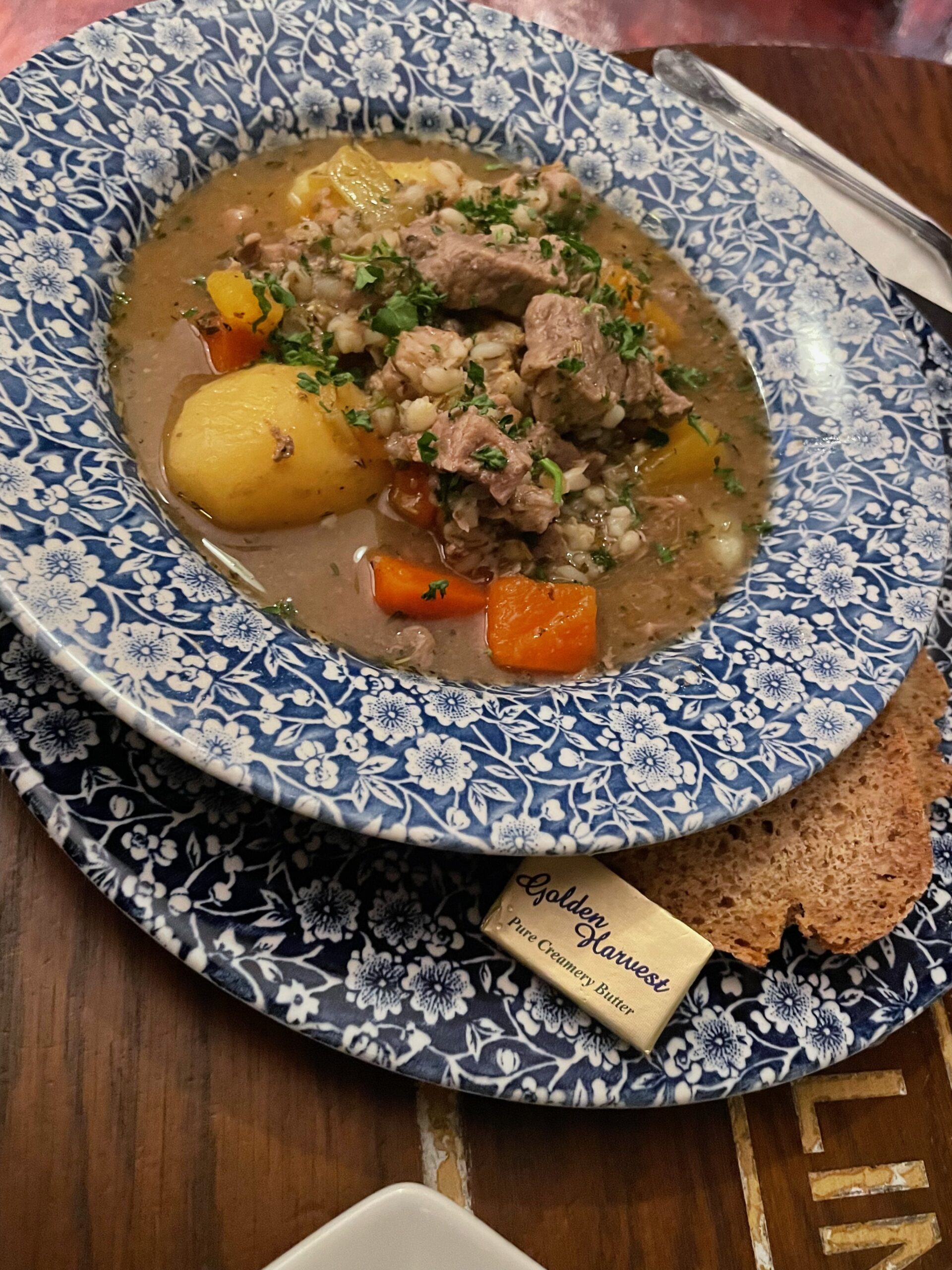 |
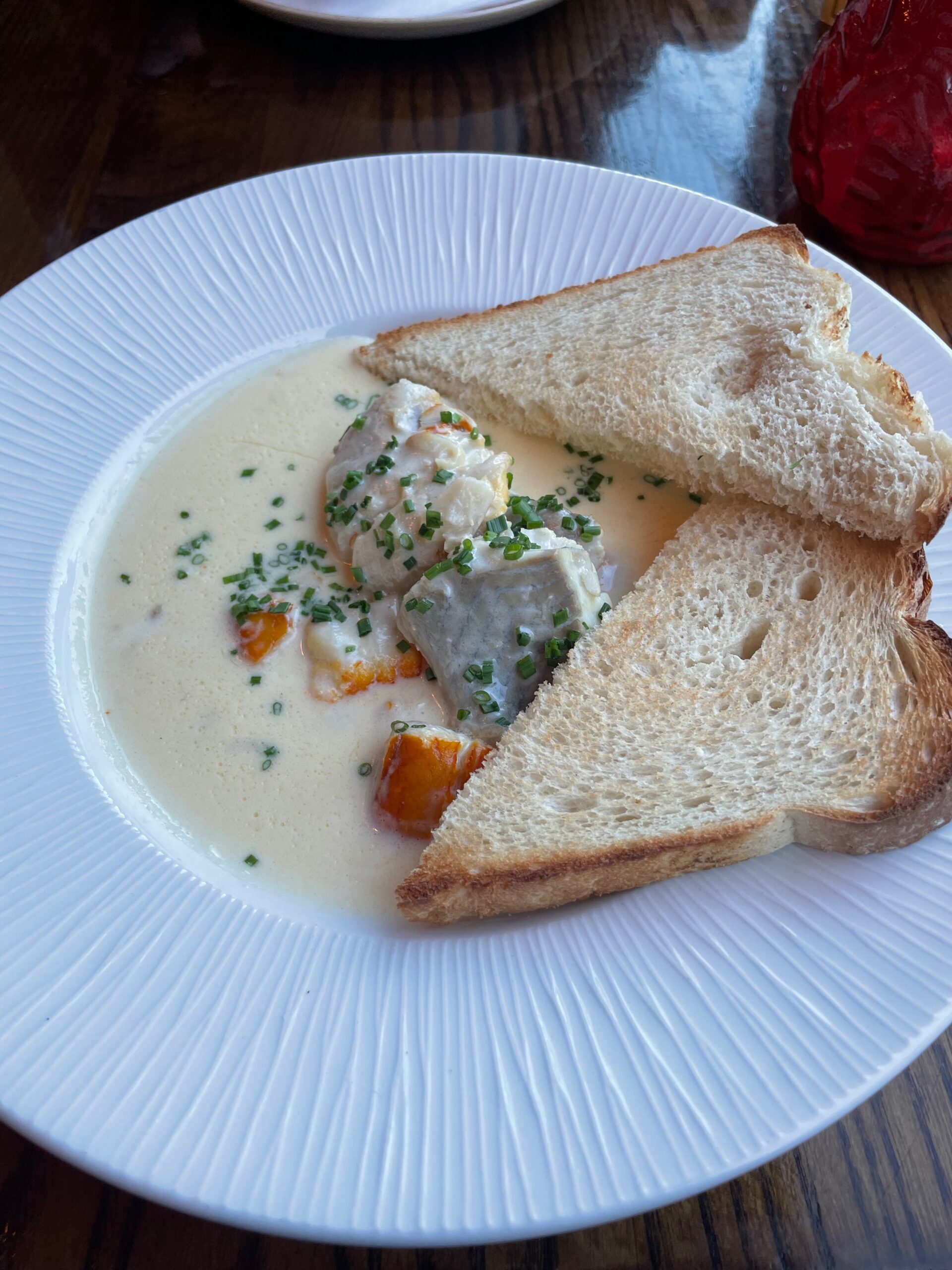 |
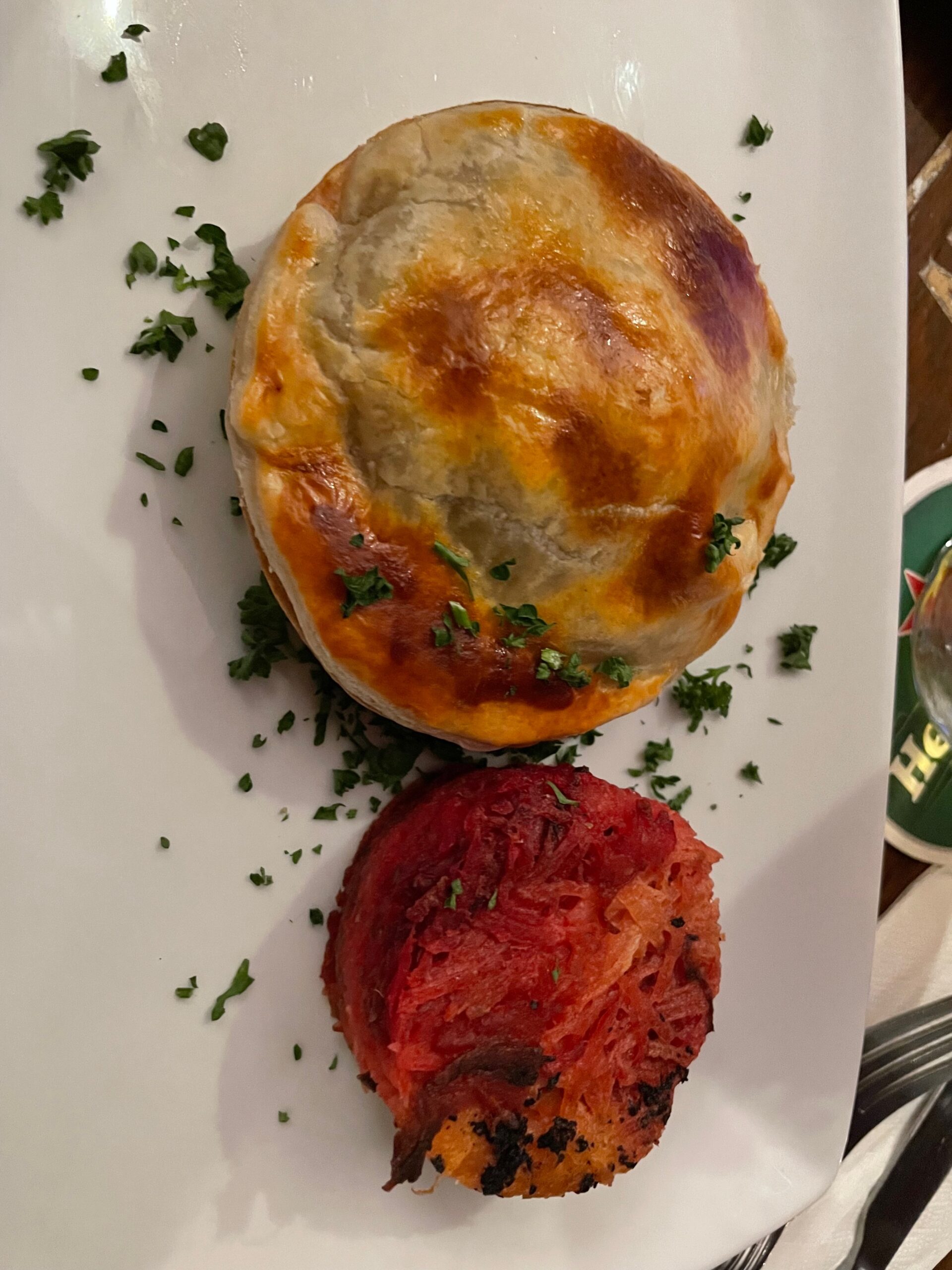 |
During your stay in Dublin I strongly recommend using local trains (very affordable tickets, search for 24, 48 or 72-hours all included transport cards for very good deals) and see a bit of charming Irish countryside. The historical castles and grand mansions (some still inhabited by their aristocratic owners), scenic cliff walks, mountain hikes and old villages are just several kilometers from Dublin, easily reachable by train.
In this post I will write about my two-day itinerary in Dublin, however I’ve been in Ireland for 4 days and other 2, I spent visiting nearby castles and doing hikes along the cliffs which I strongly recommend to discover a real charm of Ireland.
The countryside with beautiful historical mansions and scenic natural sites show another side of Ireland and since there is plenty of such places around Dublin and they’re easily accessible by public transport I strongly recommend booking extra 2-3 days planned for Dublin’s area. Of course Ireland is famous from its dramatic natural landscapes, monumental castles and traditional charming fishermen villages as well as smaller islands so if you have more time I think it’s a great idea to come here for a week or two and see more remotes areas all over the country.
Below you will find my Dublin’s two-day itinerary.
Day 1, Dublin’s essentials
I have started my day with visiting St Patrick Cathedral which is one of the symbols of the city. The entrance is paid (around 10 euros) and the audio guide is included in the fare. The church was founded in 1191 as a Roman Catholic cathedral, as you walk on your self-guided tour you learn about the cathedral’s history, life of St Patrick as well as Irish past. The temple’s interior is remarkable with elaborate stain glass, numerous busts, sepulchral monuments and mortuary plaques. During the tour many explanations concerning the elaborate interior are provided in details, you need to count around one hour for a slow walk when listening the stories about the church.
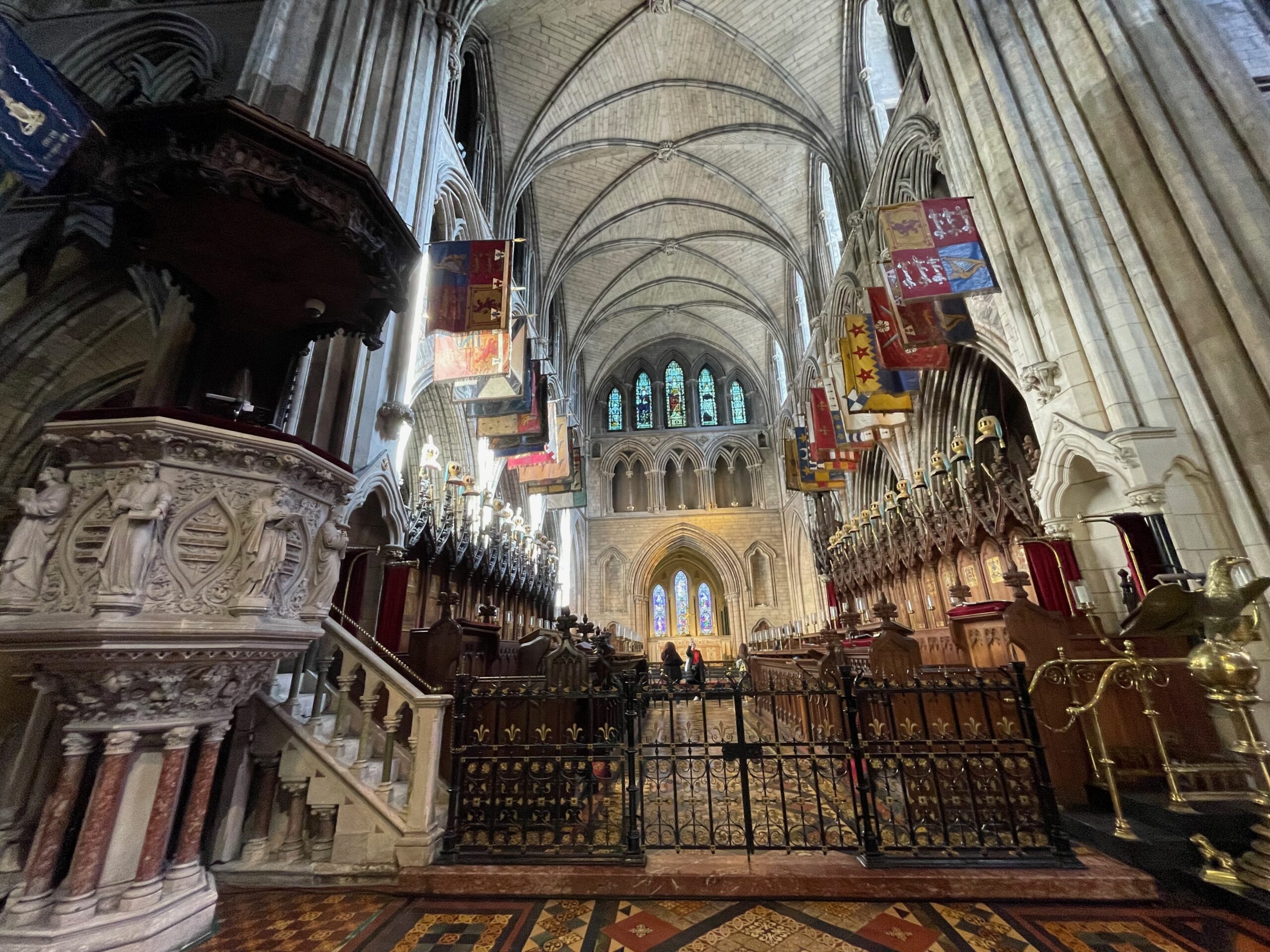 |
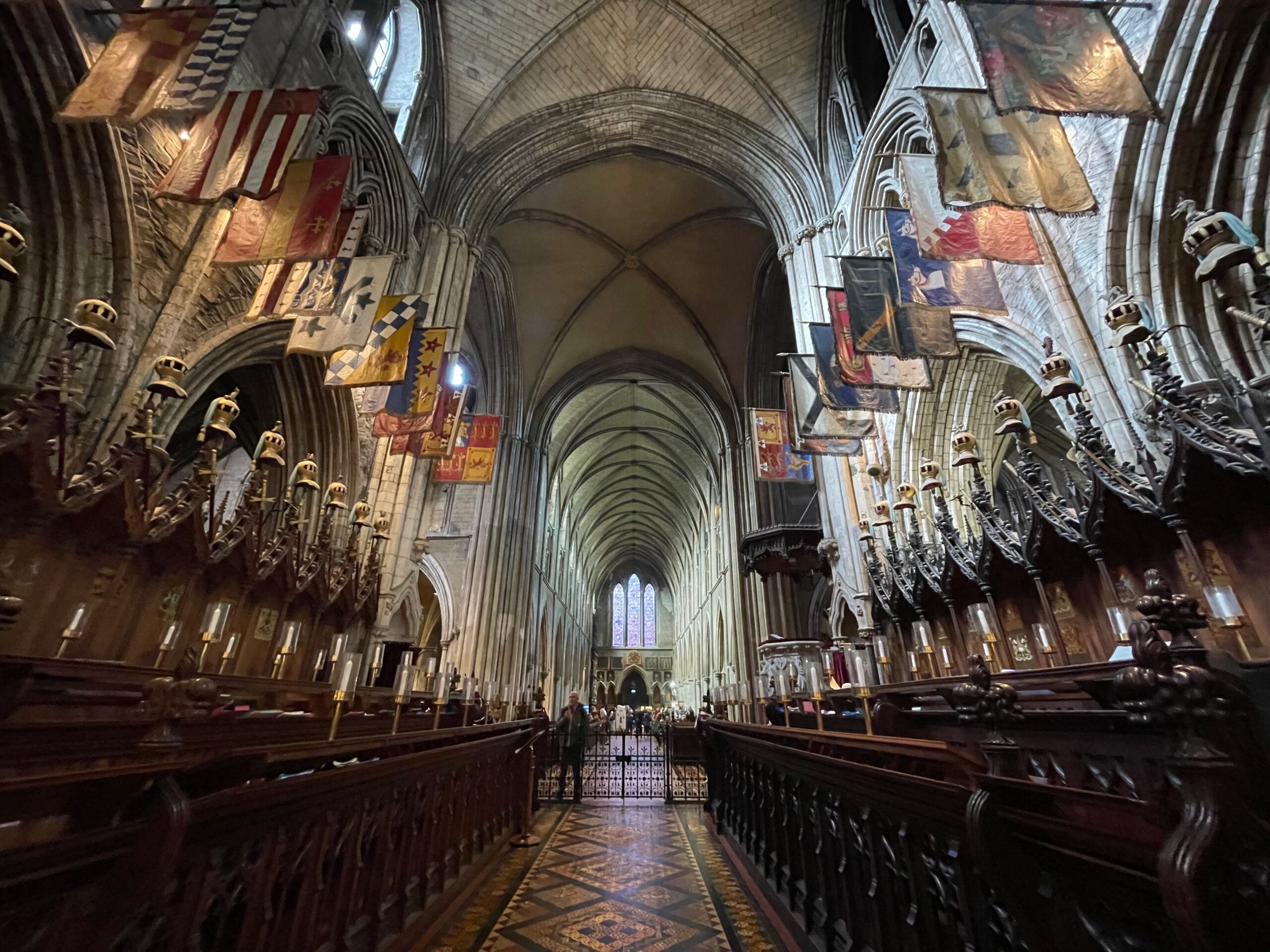 |
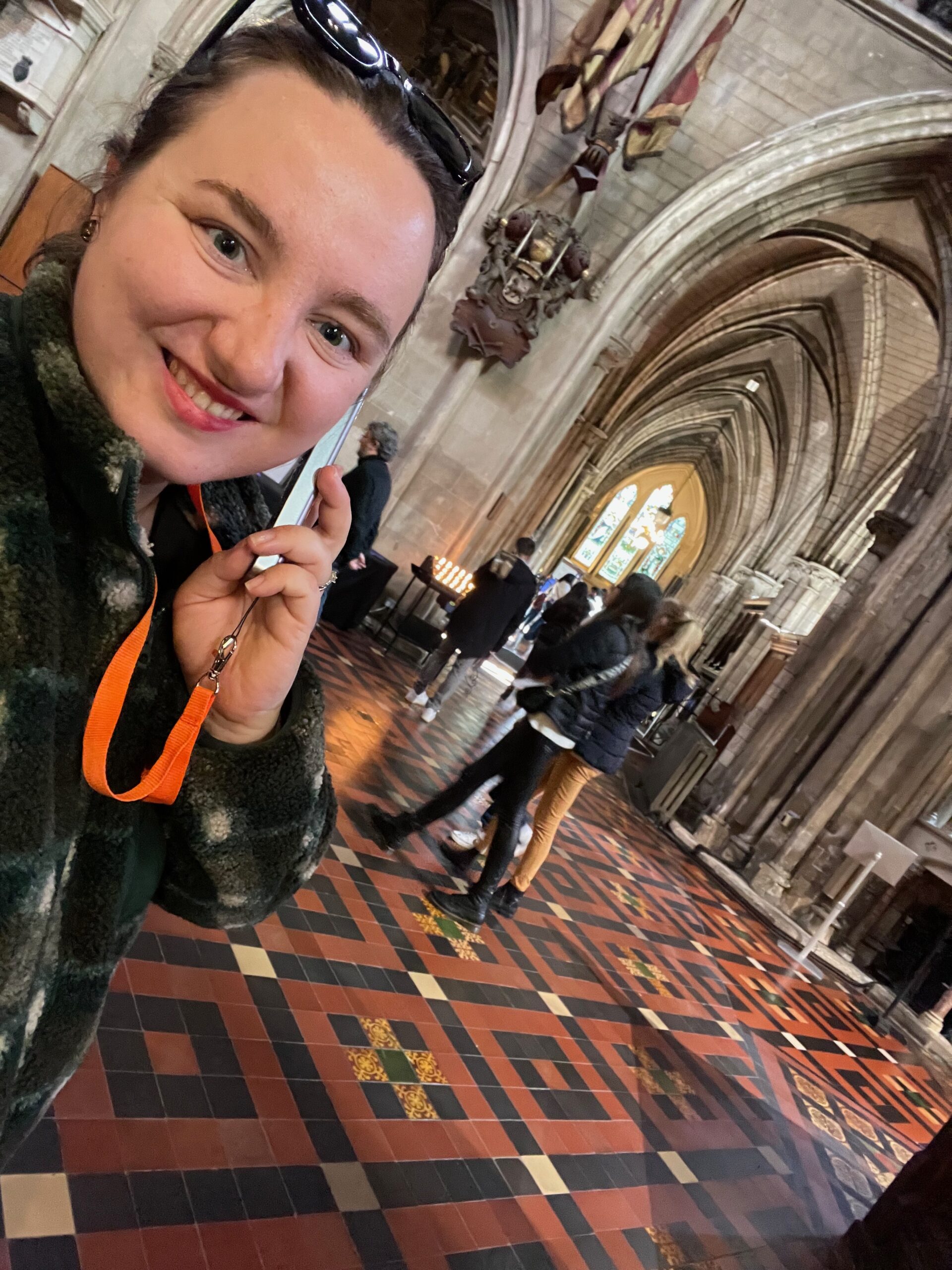 |
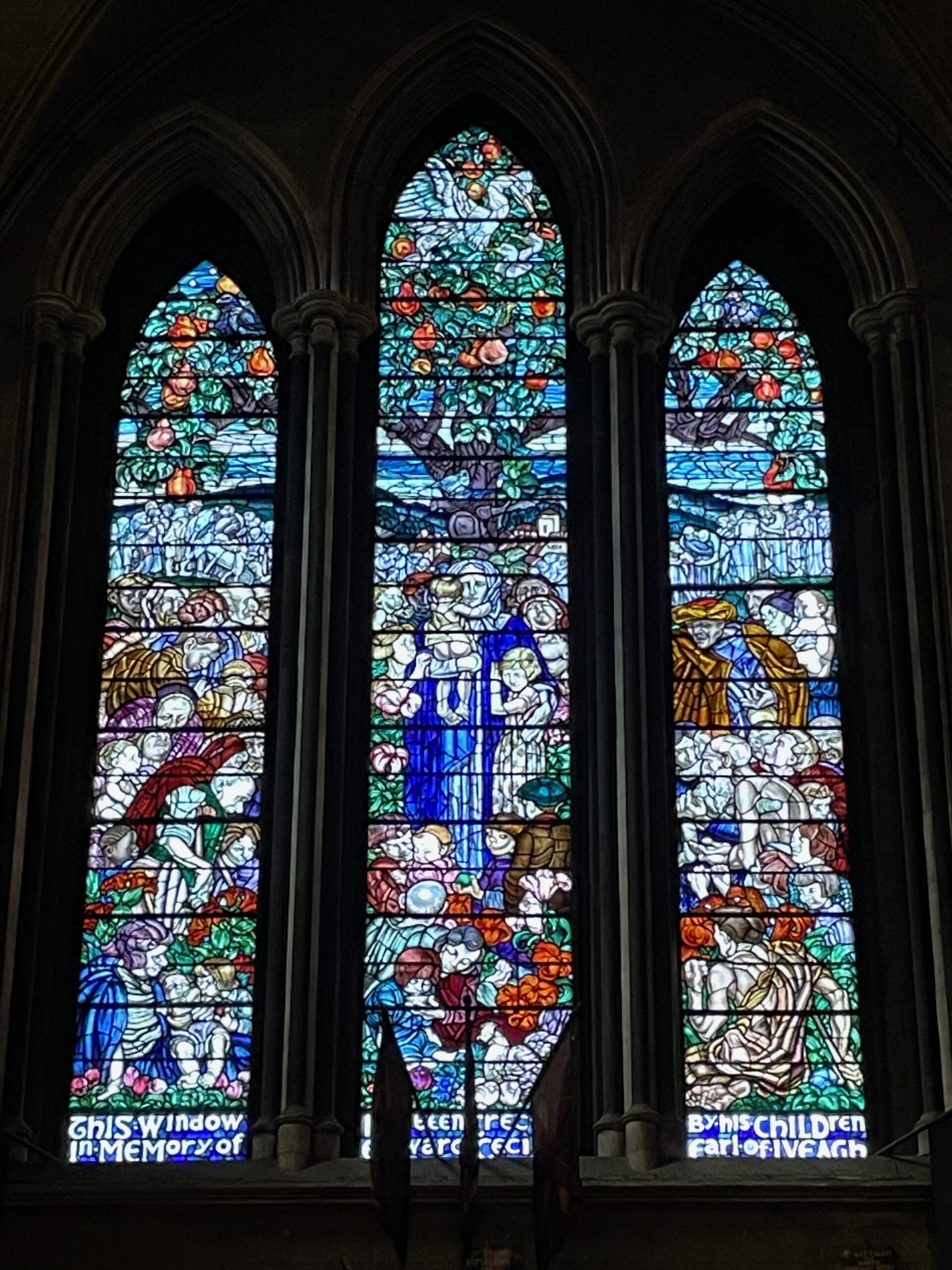 |
When walking around St Patrick Cathedral I recommend spending a while to admire the beautiful architecture of the adjacent buildings.
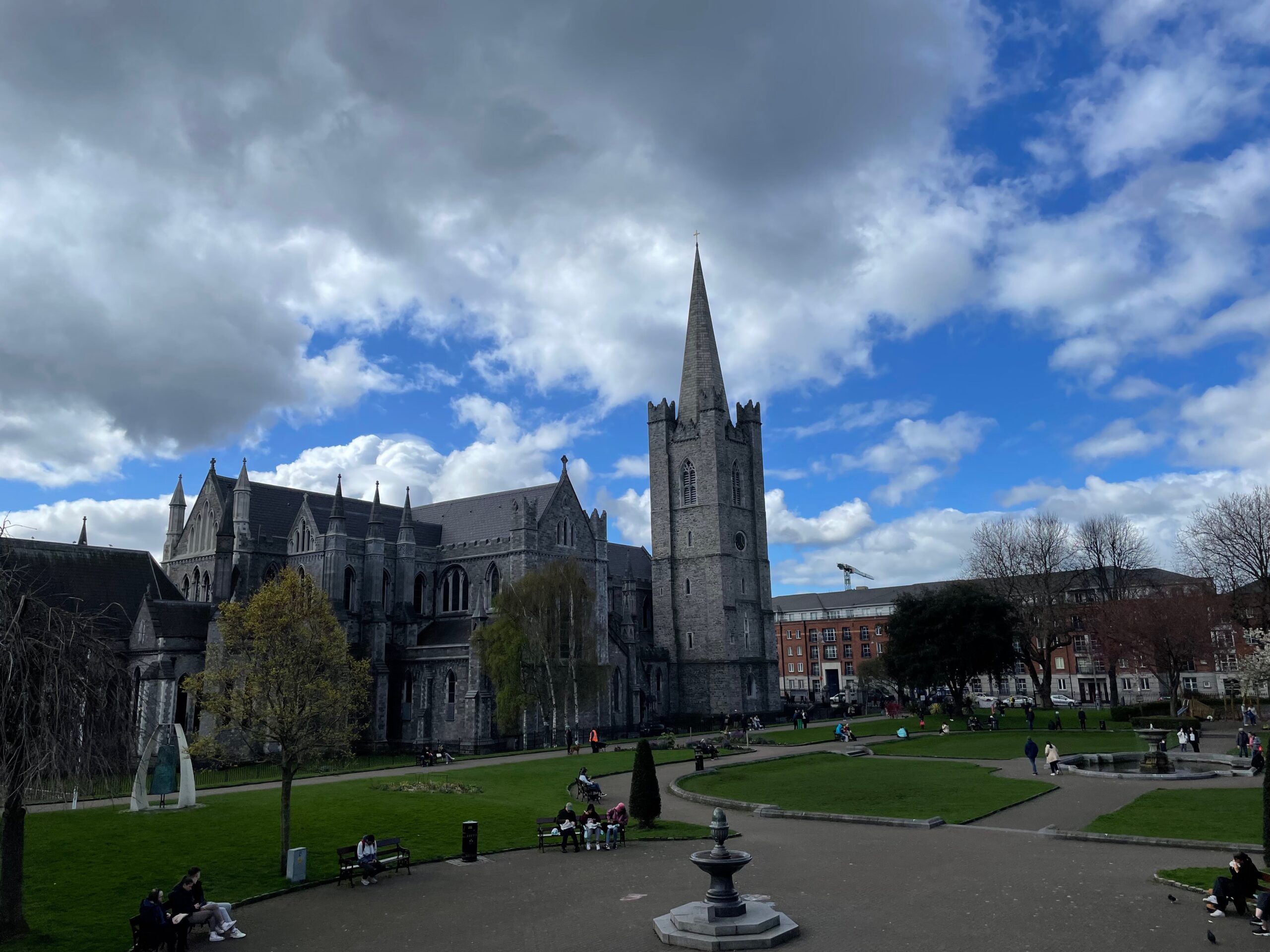 |
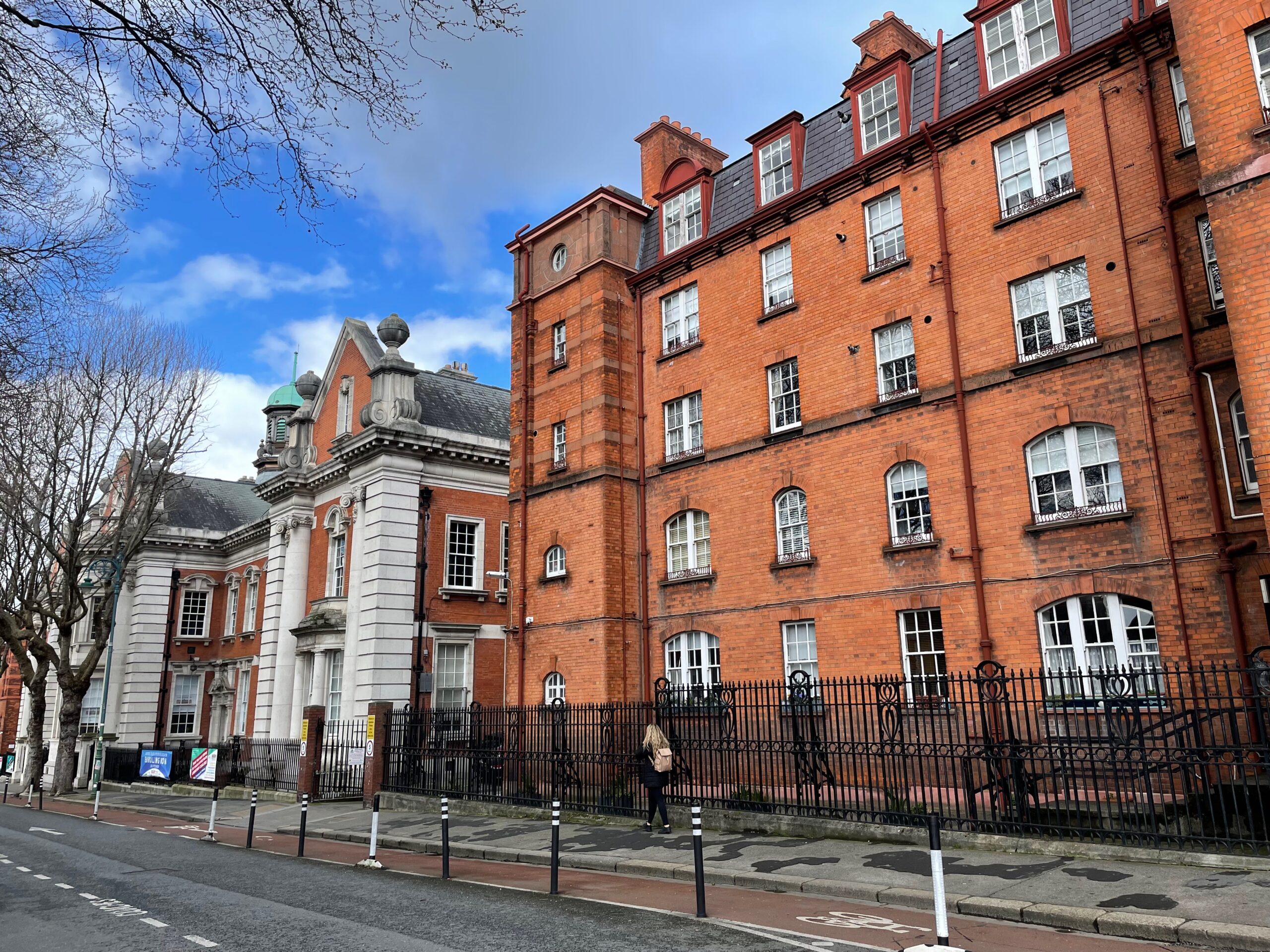 |
If you’re interested in Dublin’s heritage churches I also recommend visiting the Christ Church Cathedral. The temple was founded in 1030, its architecture is a mixture of styles from the medieval period to the Victorian Era. As in case of visiting St Patrick Cathedral, the entrance is paid. Even if you don’t plan to see the interior (I didn’t since the church was closed for preparations for Easter celebrations), I suggest seeing it just from outside to admire its sophisticated architecture. The temple is just a short walk away from St Patrick Cathedral so you can easily visit two sites during the same stroll, the Christ Church Cathedral is located in the medieval Dublin district so look around for charming streets with historical buildings and heritage sites.
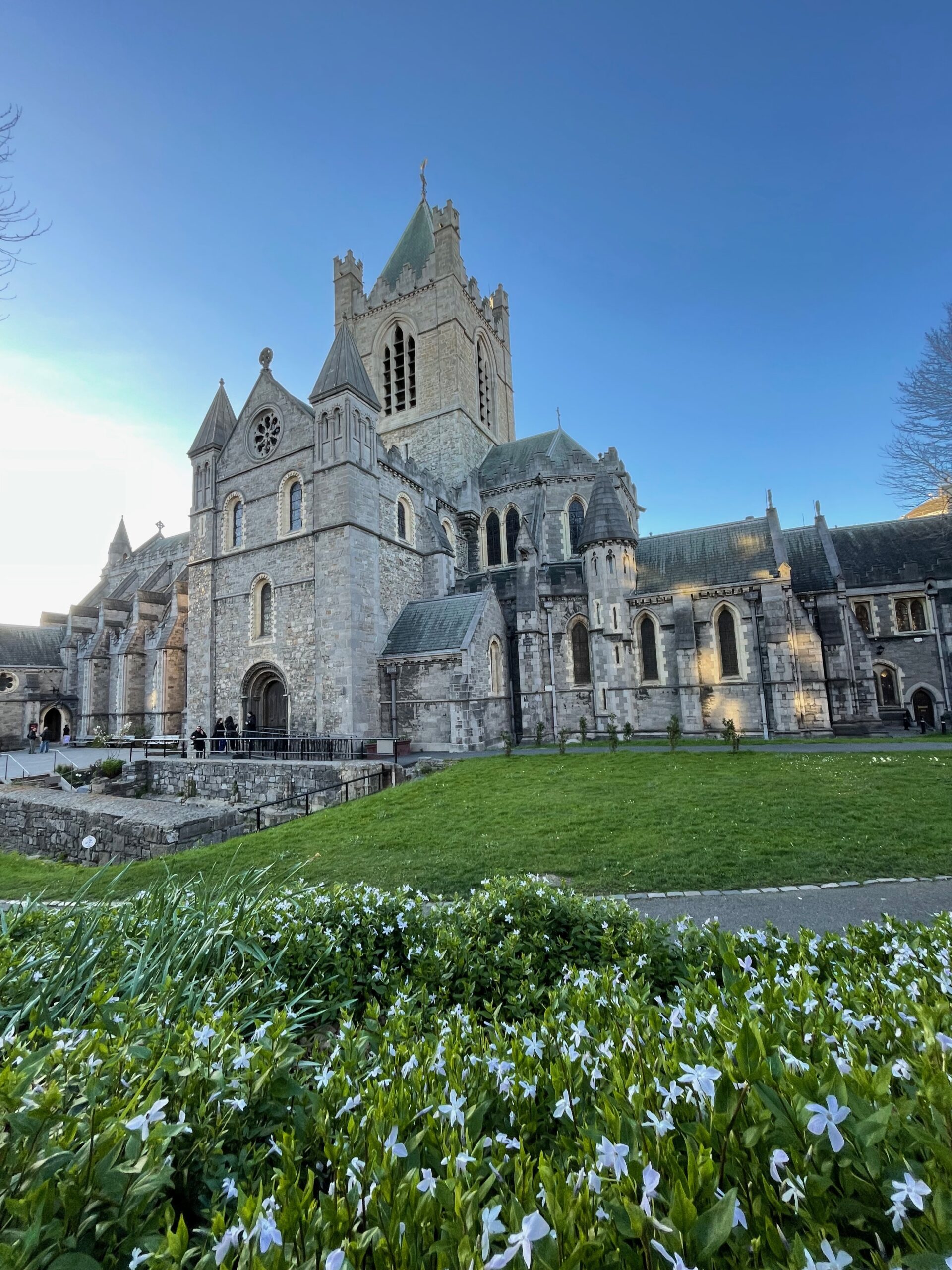 |
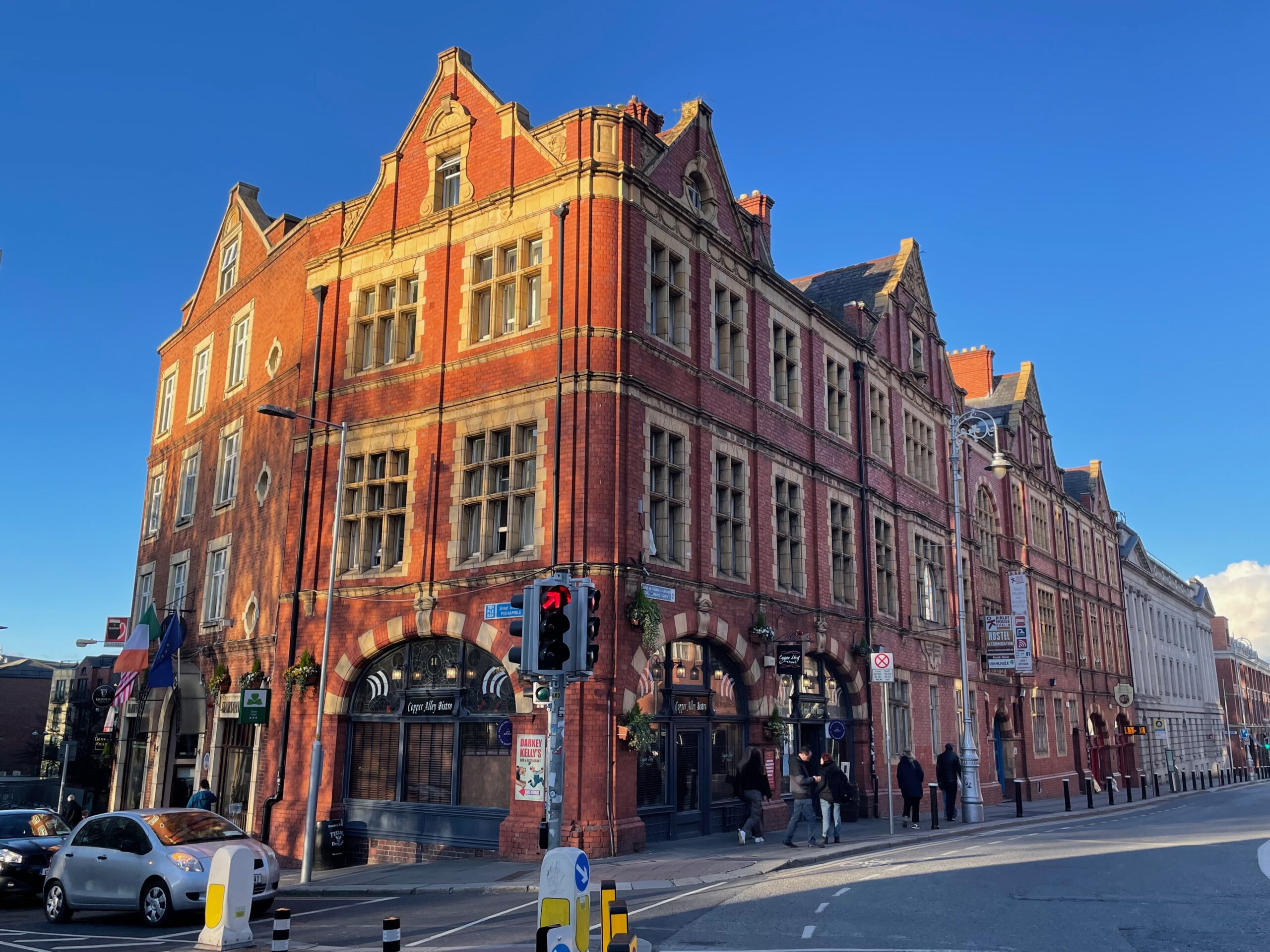 |
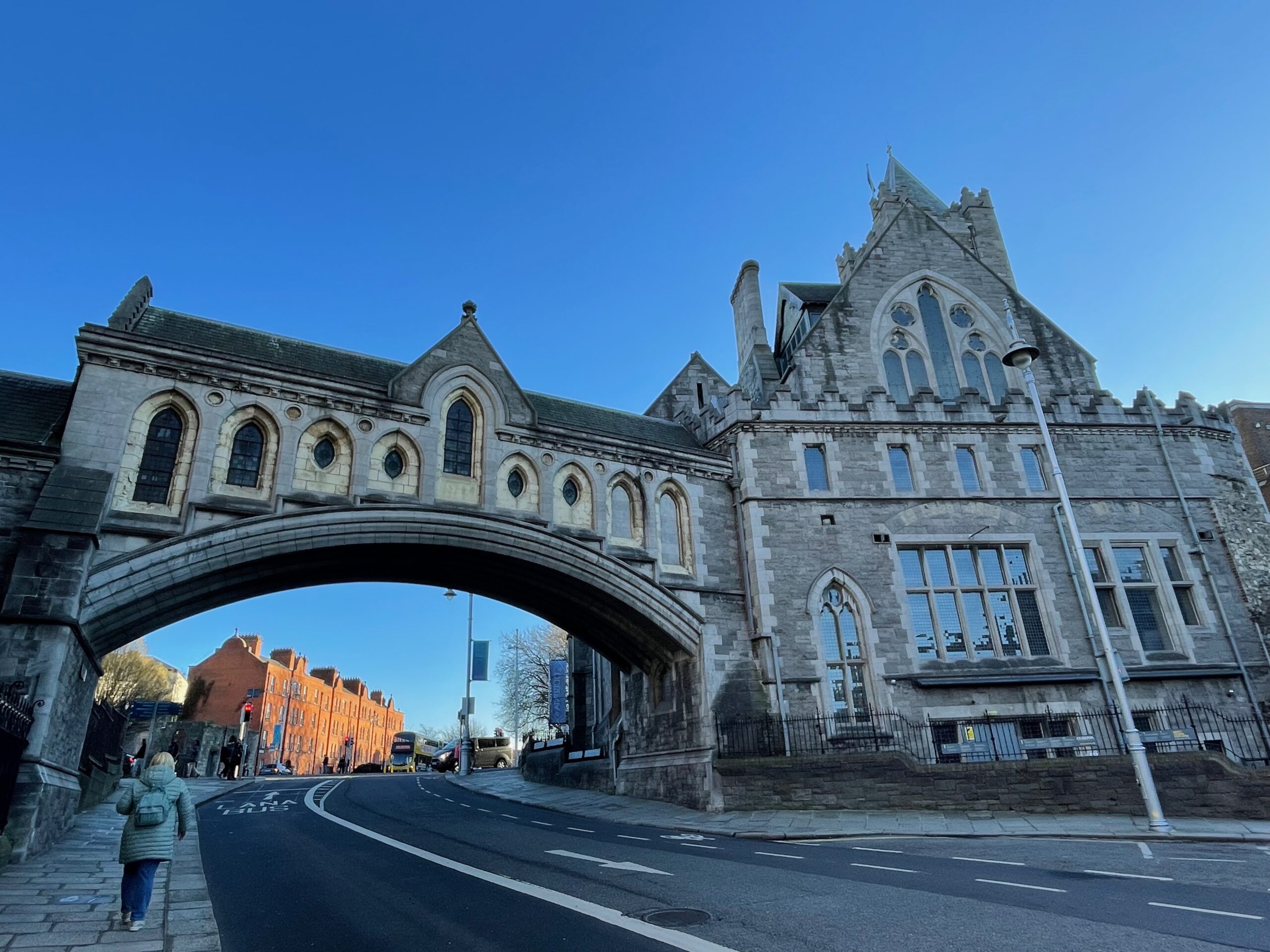 |
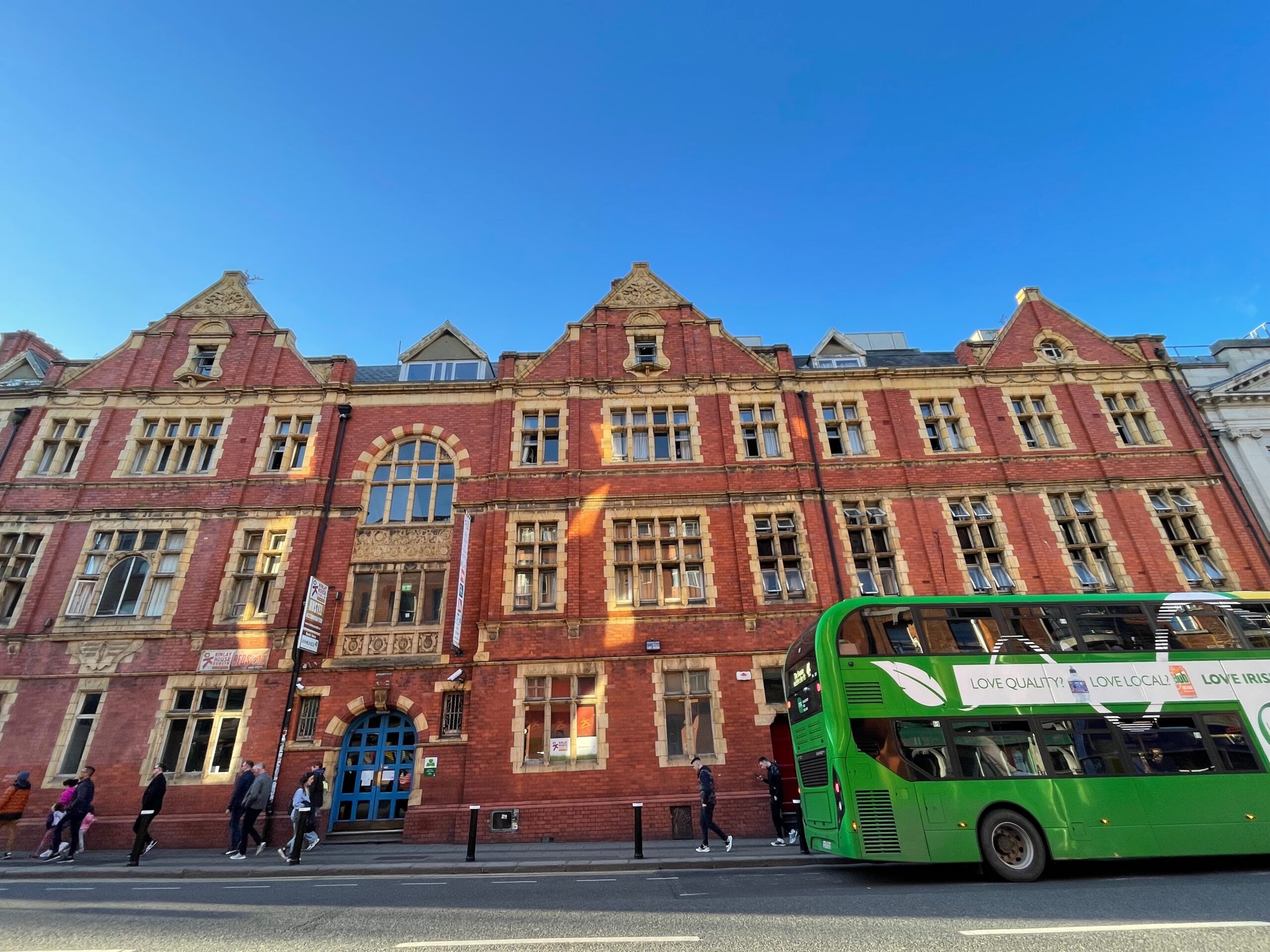 |
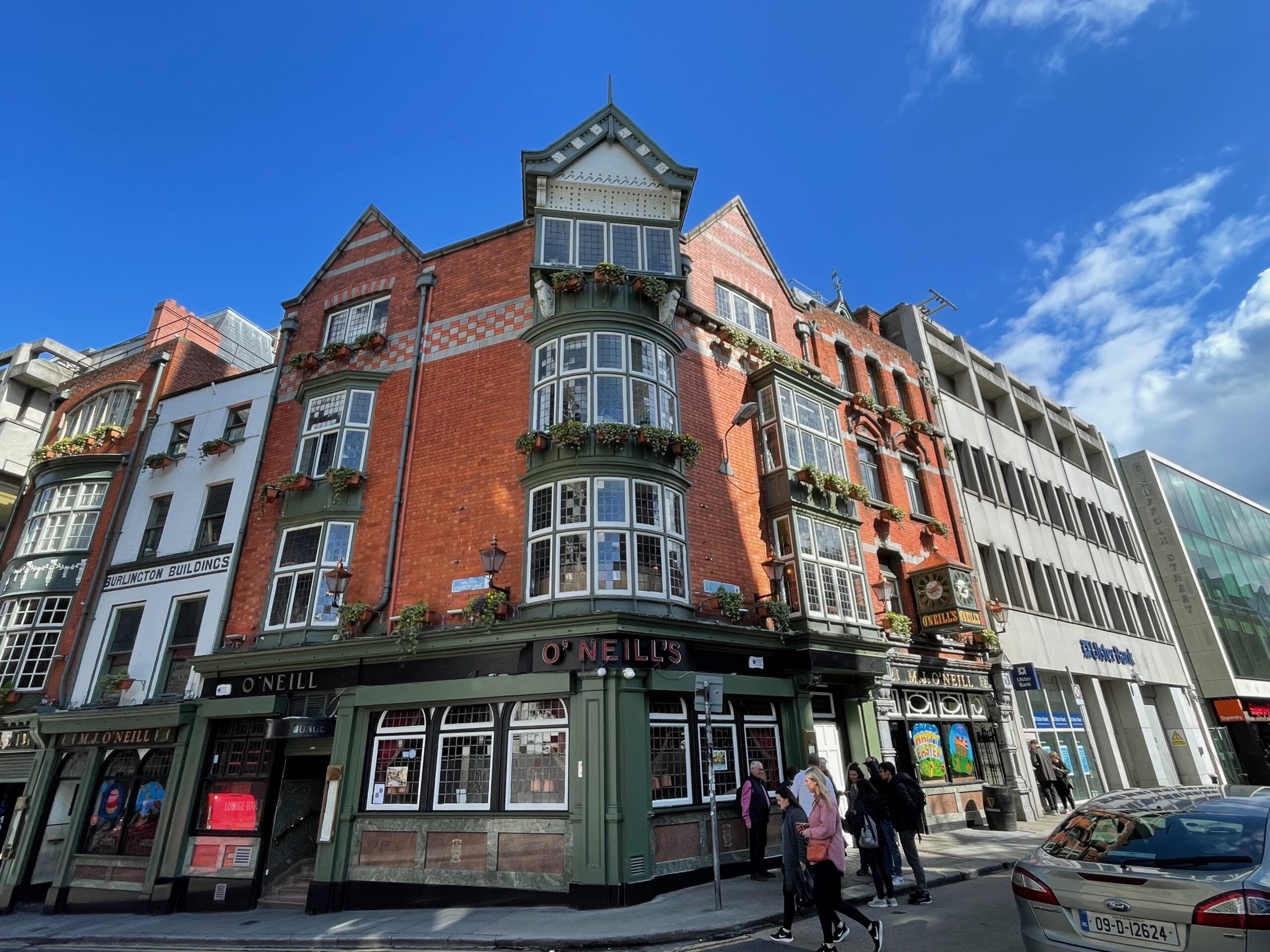 |
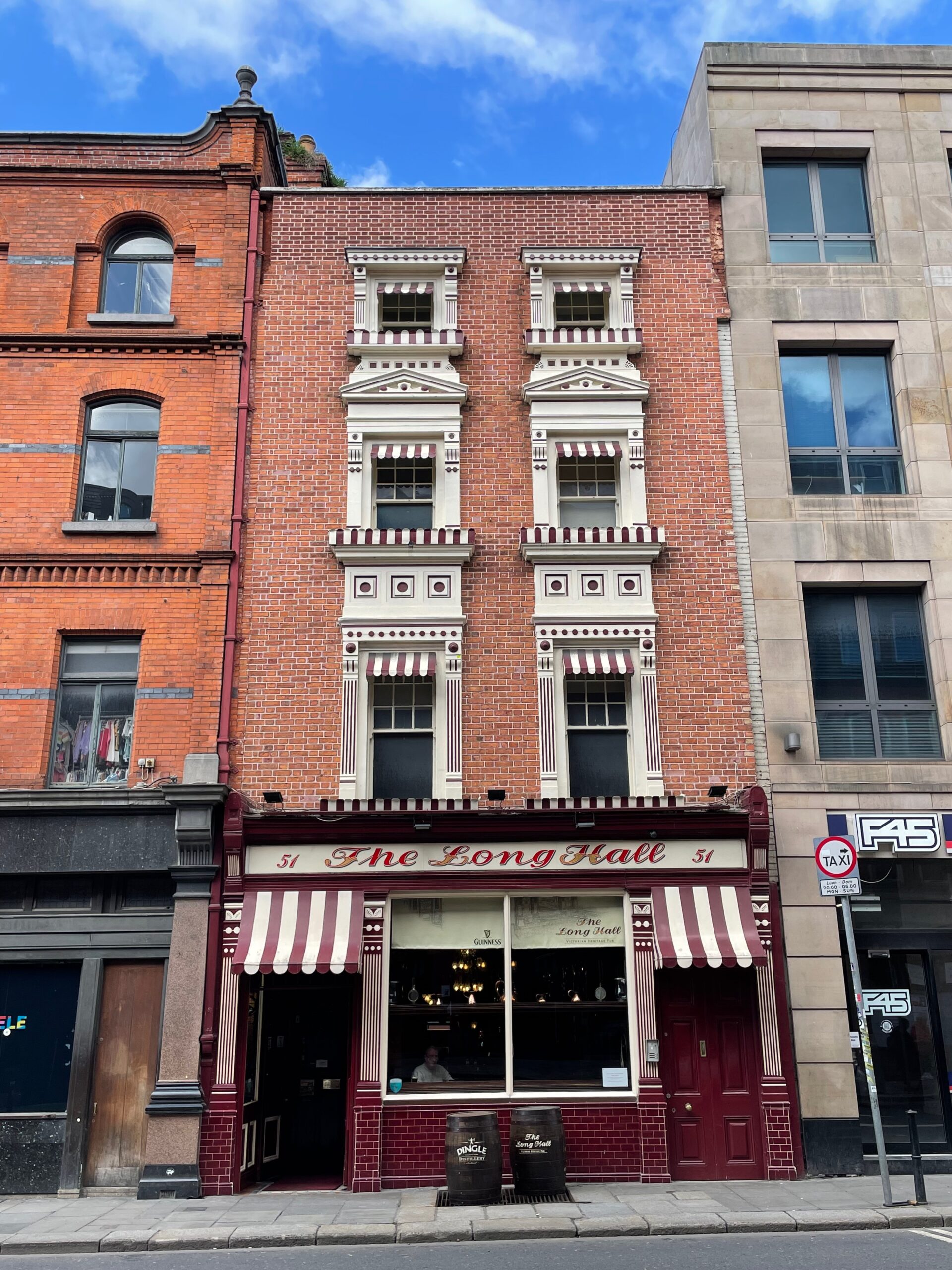 |
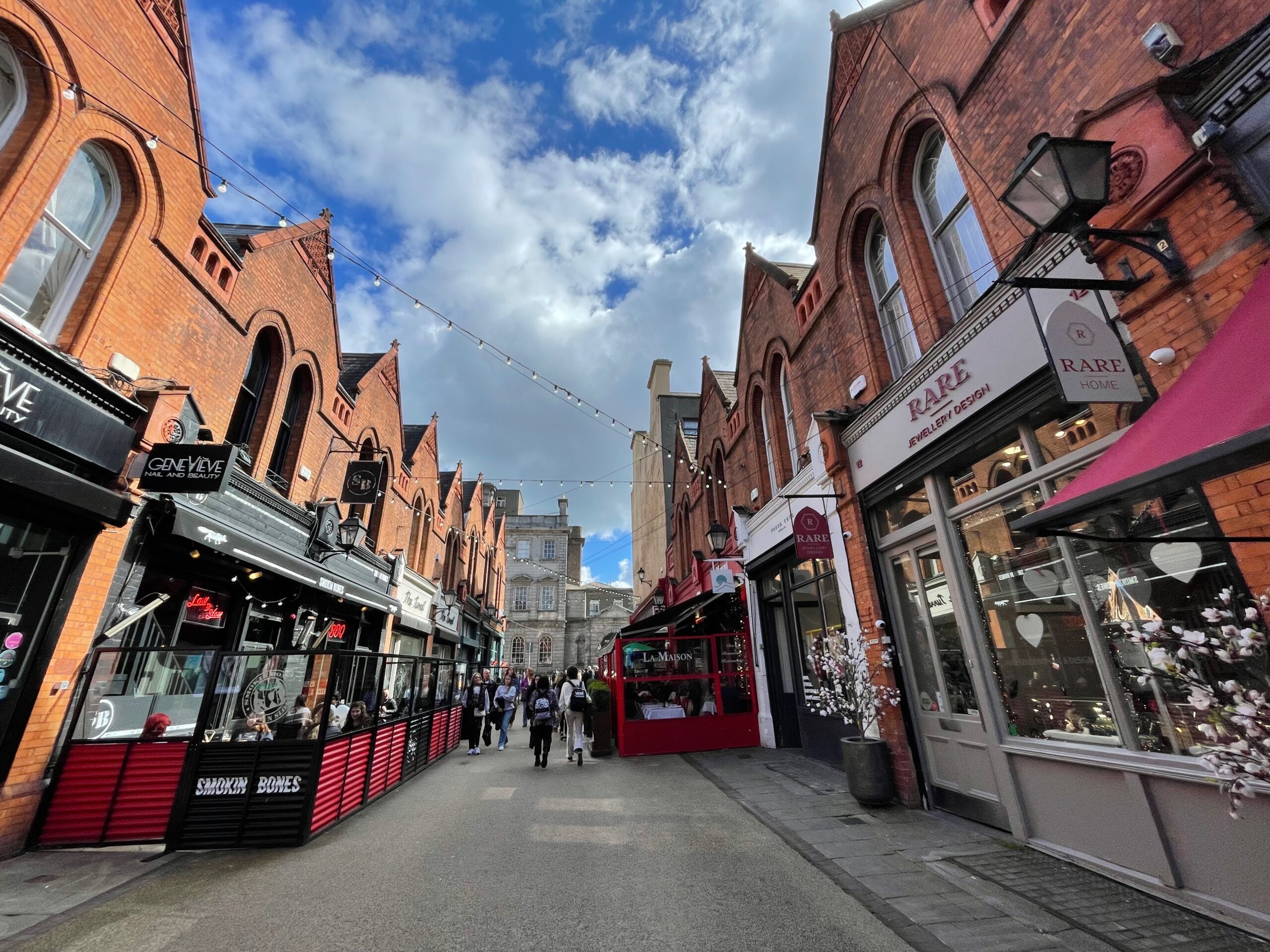 |
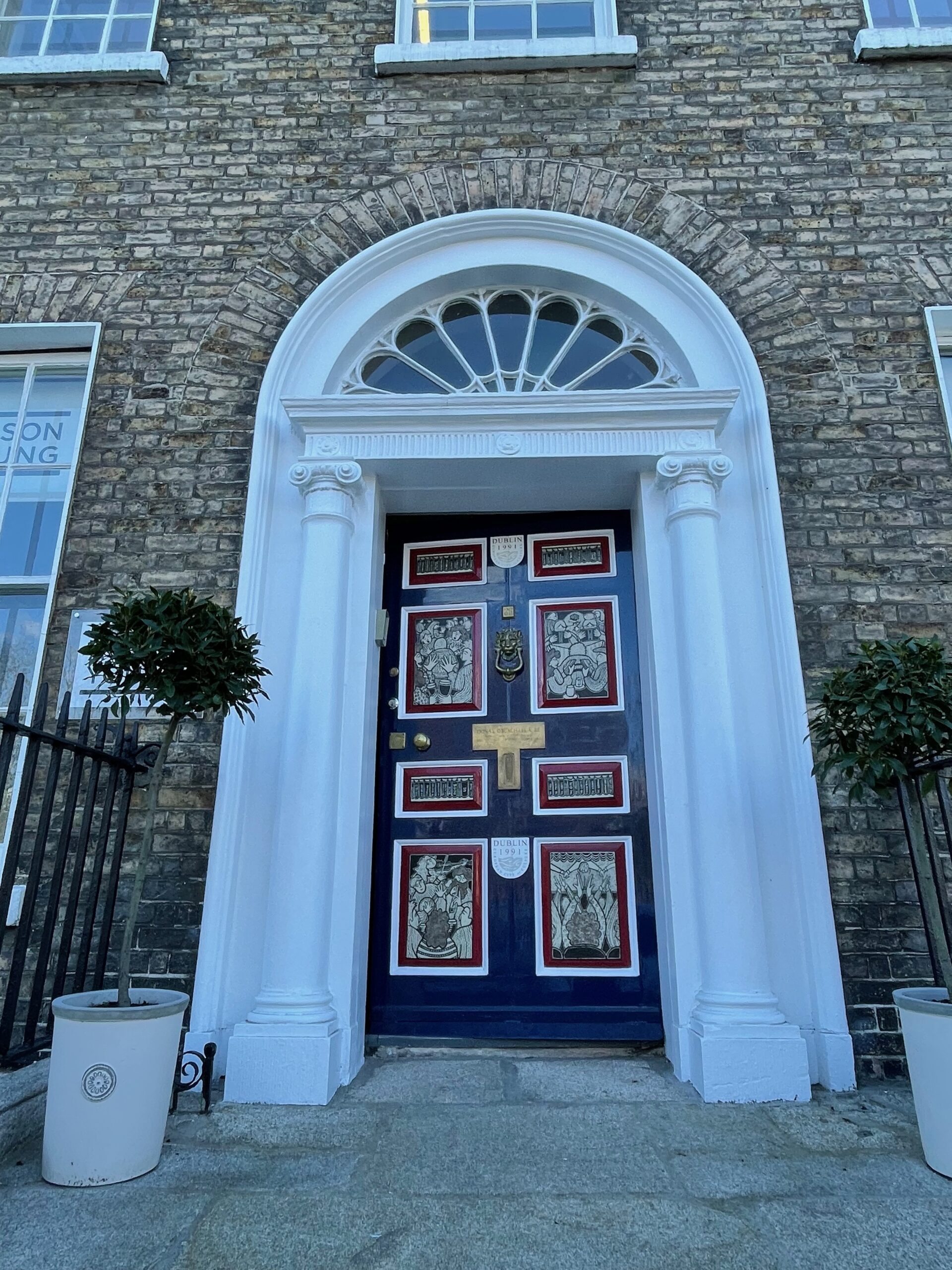 |
Our next steps were directed towards the Trinity College with the main cultural venue being the treasury with The Book of Kells and Old Library. I suggest booking your entry tickets one day in advance to choose convenient hour. From my experience, around noon the tickets for the day tend to be sold out and coming in the morning without reservation often means you need to come back for later slot in the afternoon which also is quite restricting. The book of Kells dates back to the 9th century and is an illuminated manuscript Gospel book written in Latin with four Gospels of the New Testament along with numerous prefatory texts and tables. The book is an absolute masterpiece and it’s one of Ireland’s greatest cultural treasure. After you see the book you proceed to the Long Room which is a magnificent library with a collection of 200,000 oldest books. The Long Room is considered as one of the most impressive libraries in the world (according to the note on the website of the Trinity College). Count around 60 minutes for the visit, downstairs there is quite stocked souvenir shop.
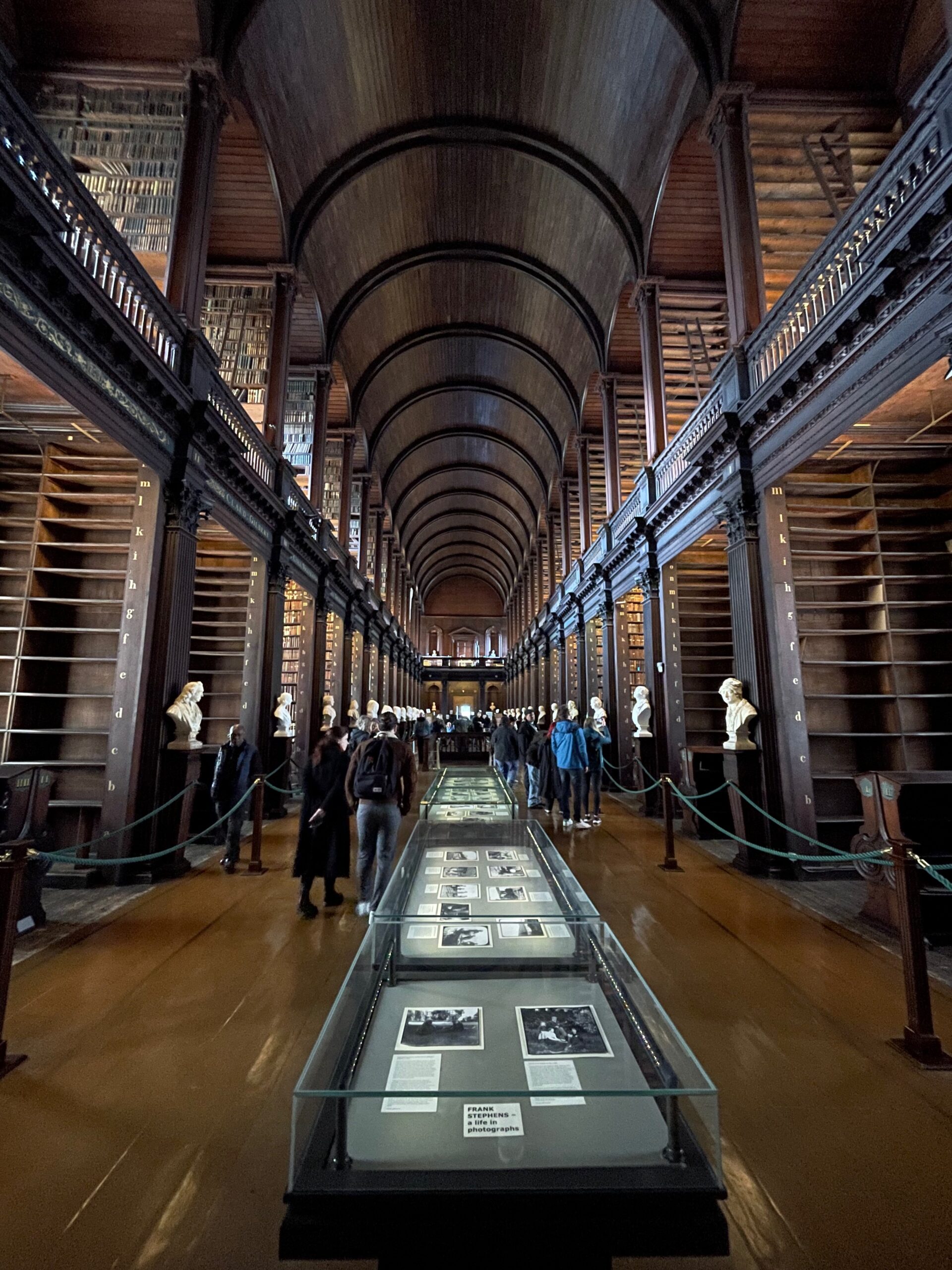 |
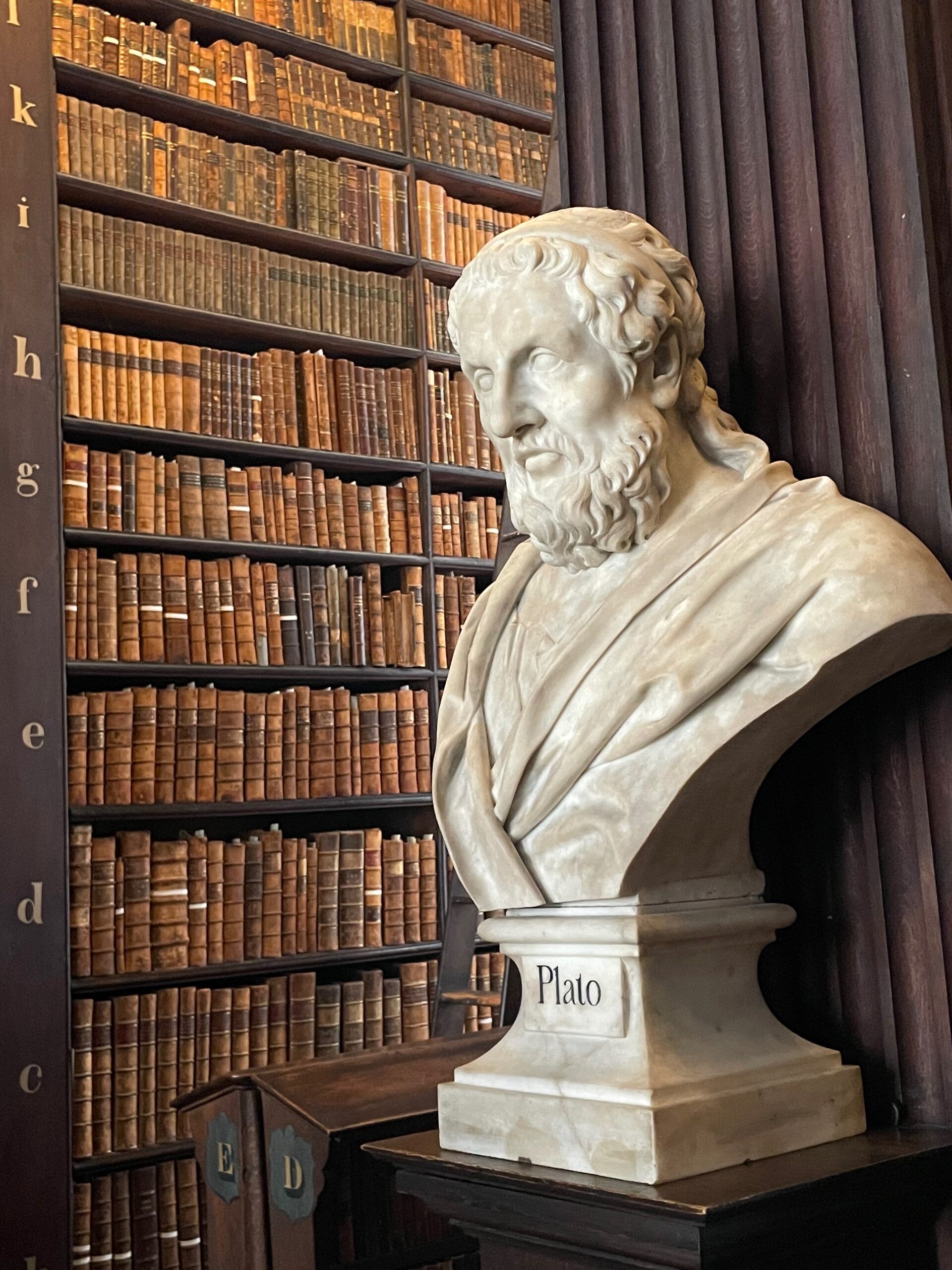 |
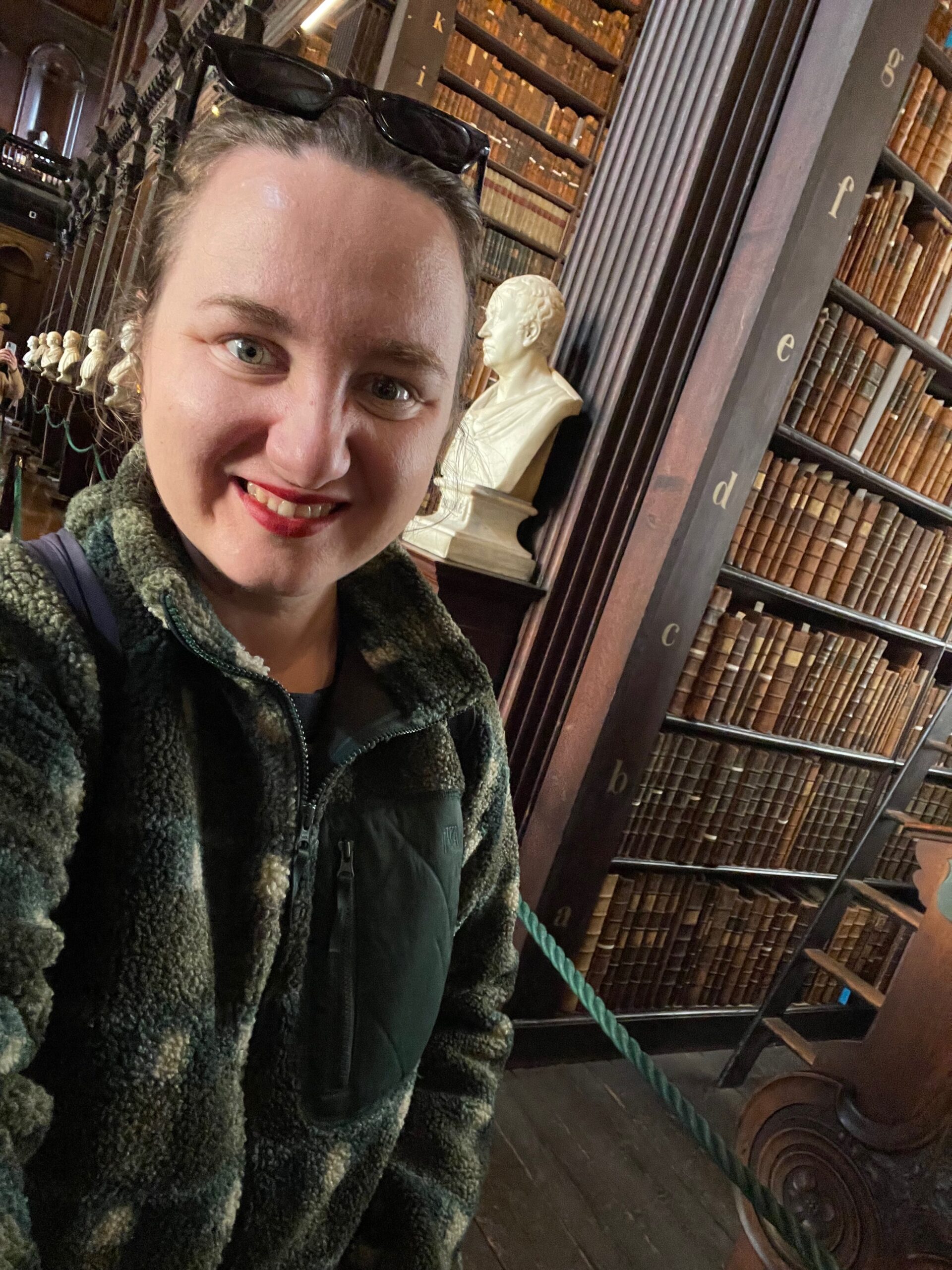 |
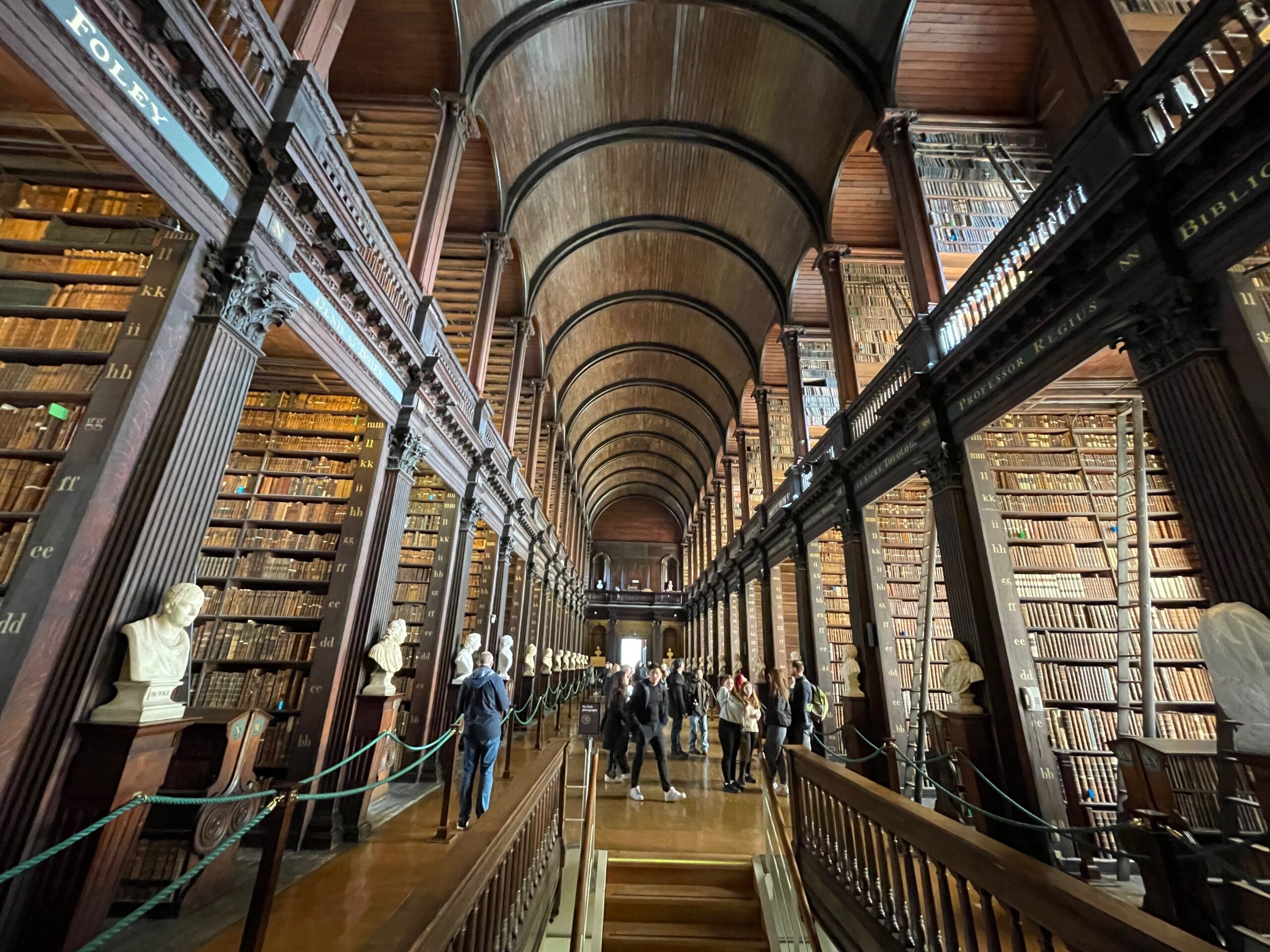 |
When already on grounds of the Trinity College, I recommend having a walk around the campus. The university was founded in 1592 and is one of the most prestigious academic institutions in the world. The campus is a mix of old historical buildings as well as more modern additions. Apart from the faculties’ buildings there are vast green spaces and many sport facilities and you really feel as you left Dublin when you walk along the tranquil university’s premises.
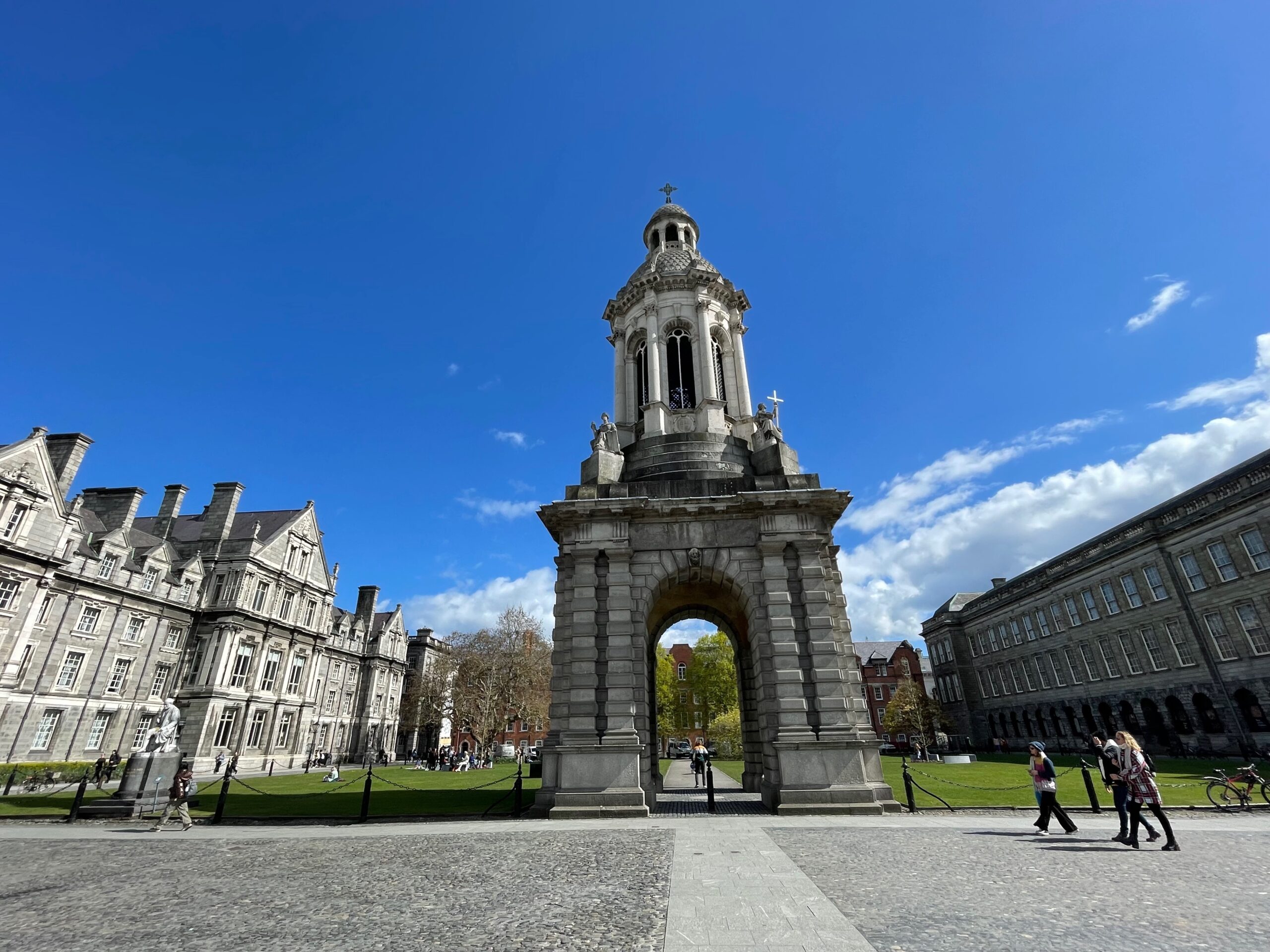 |
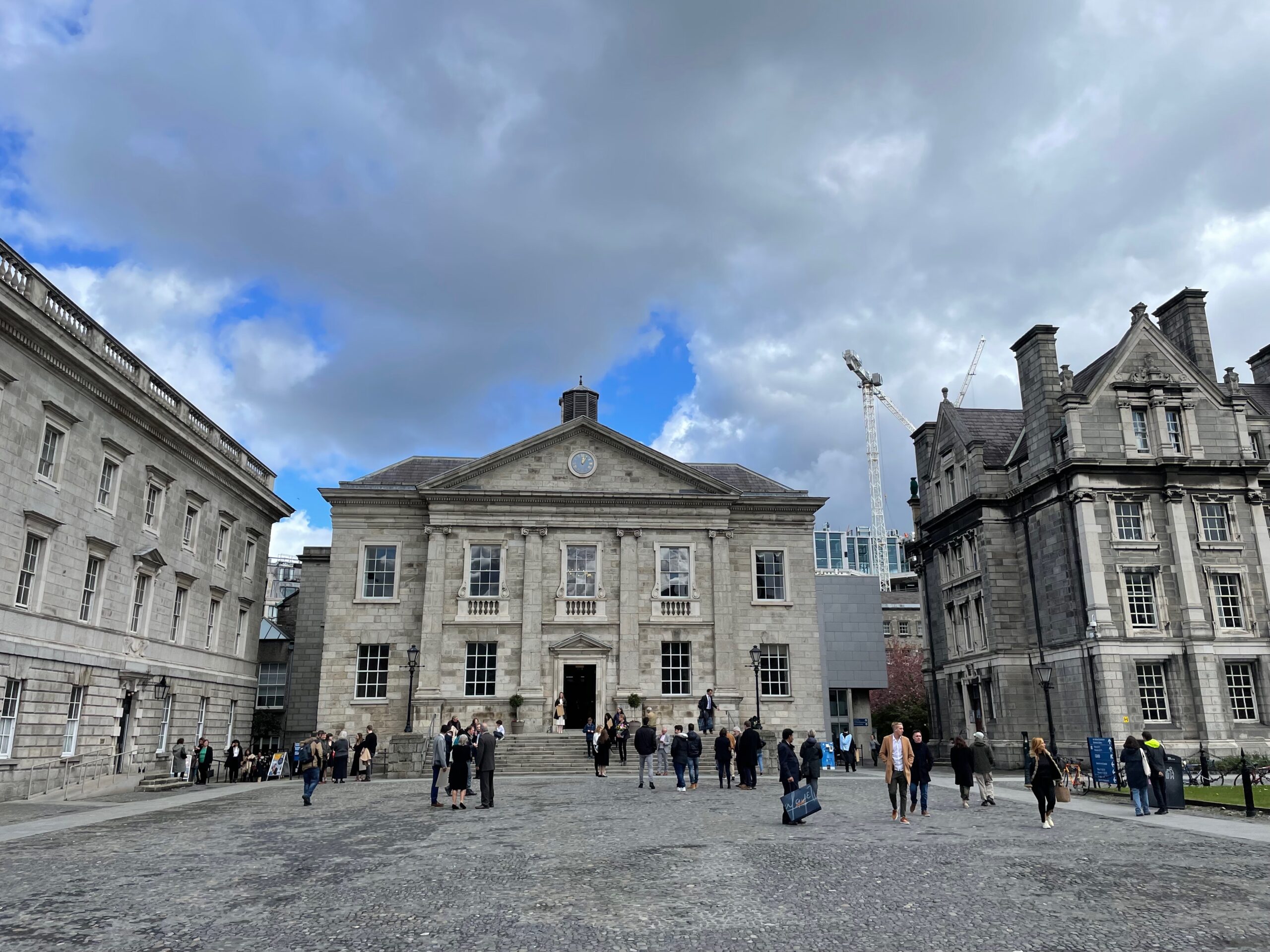 |
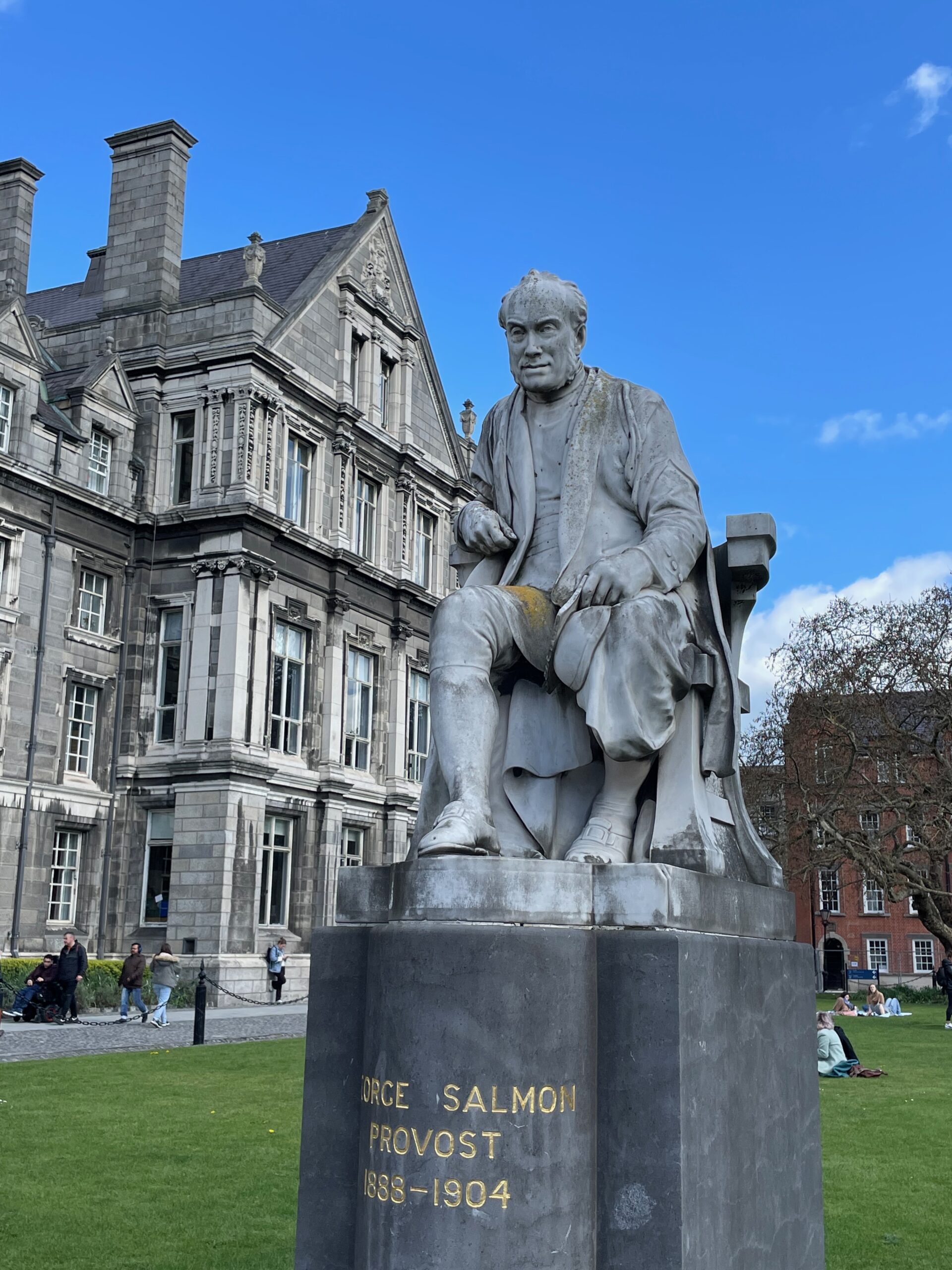 |
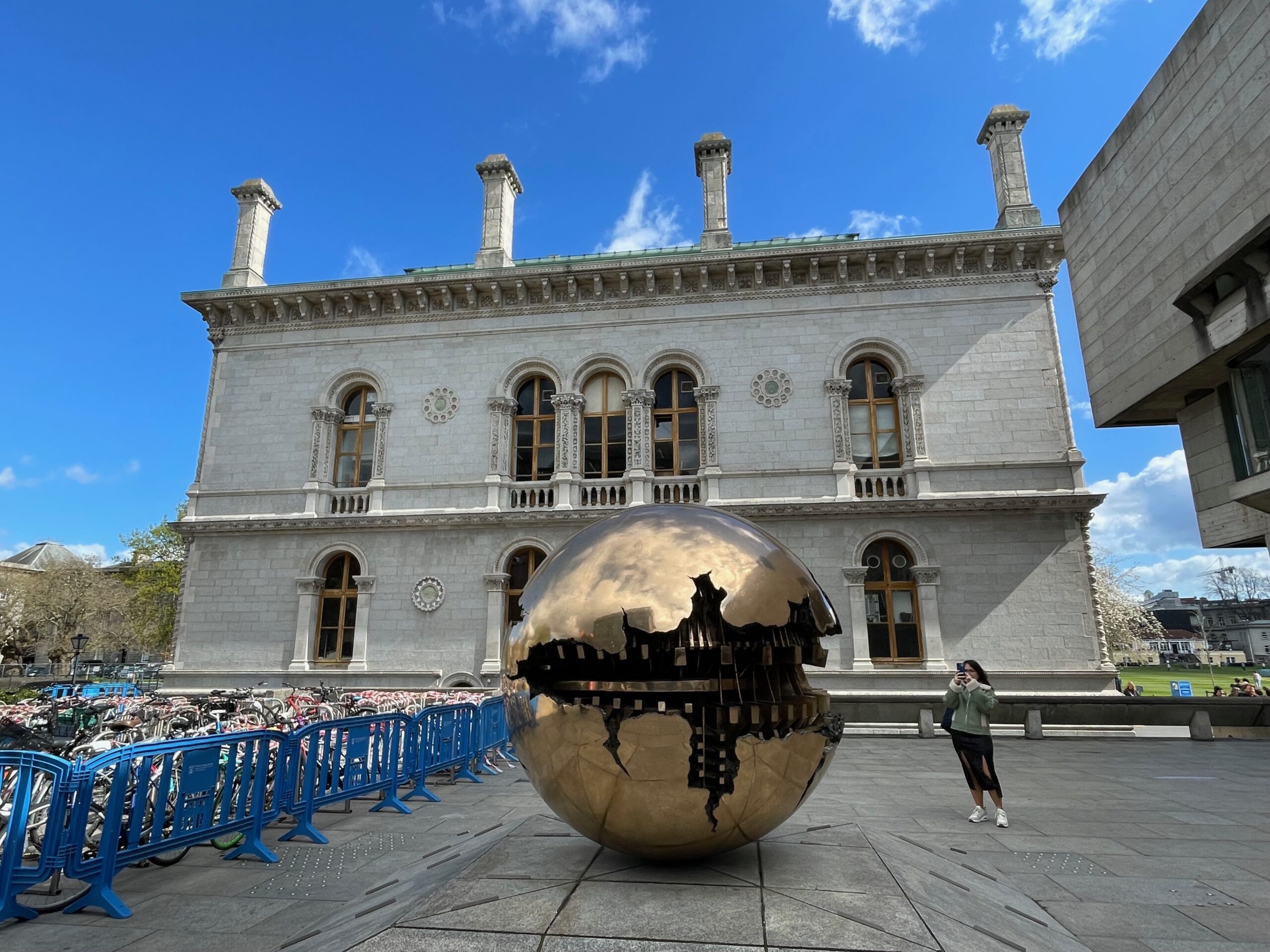 |
After the relaxing walk around the Trinity College I felt quite bookish and went to a very charming bookstore Hodges Figgis which happens to be the oldest bookshops in Ireland dating back to 1768. There are 2 floors (and half?) filled with different books, there are few shelves devoted to Irish authors, album’s about Ireland’s nature, its history, cuisine and culture, but you will also find a vast offer of classical literature, fiction, factual, children’s book as well as academic positions. If you’re an English speaker I strongly recommend coming here and pick some titles depending on your interests.
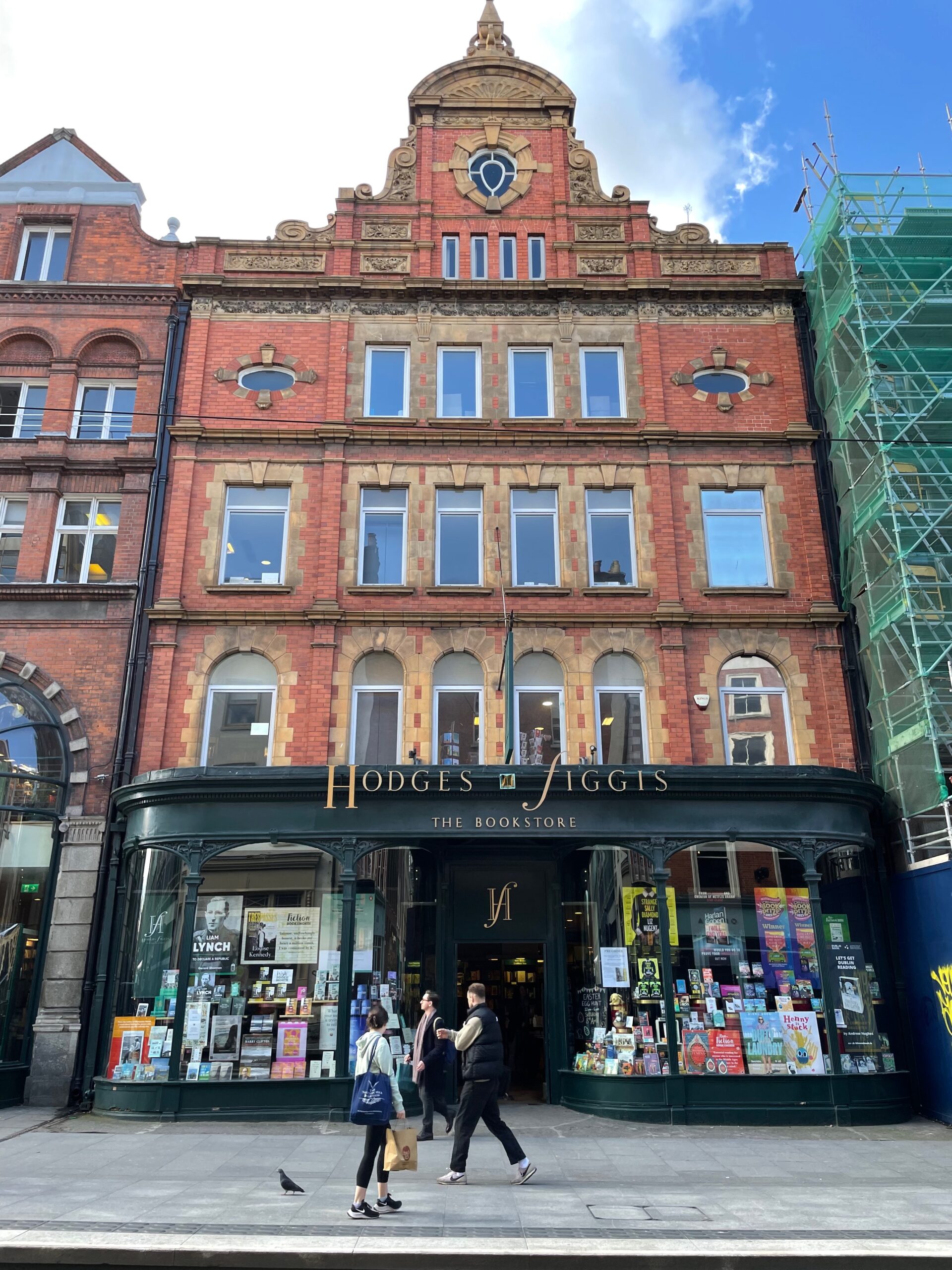 |
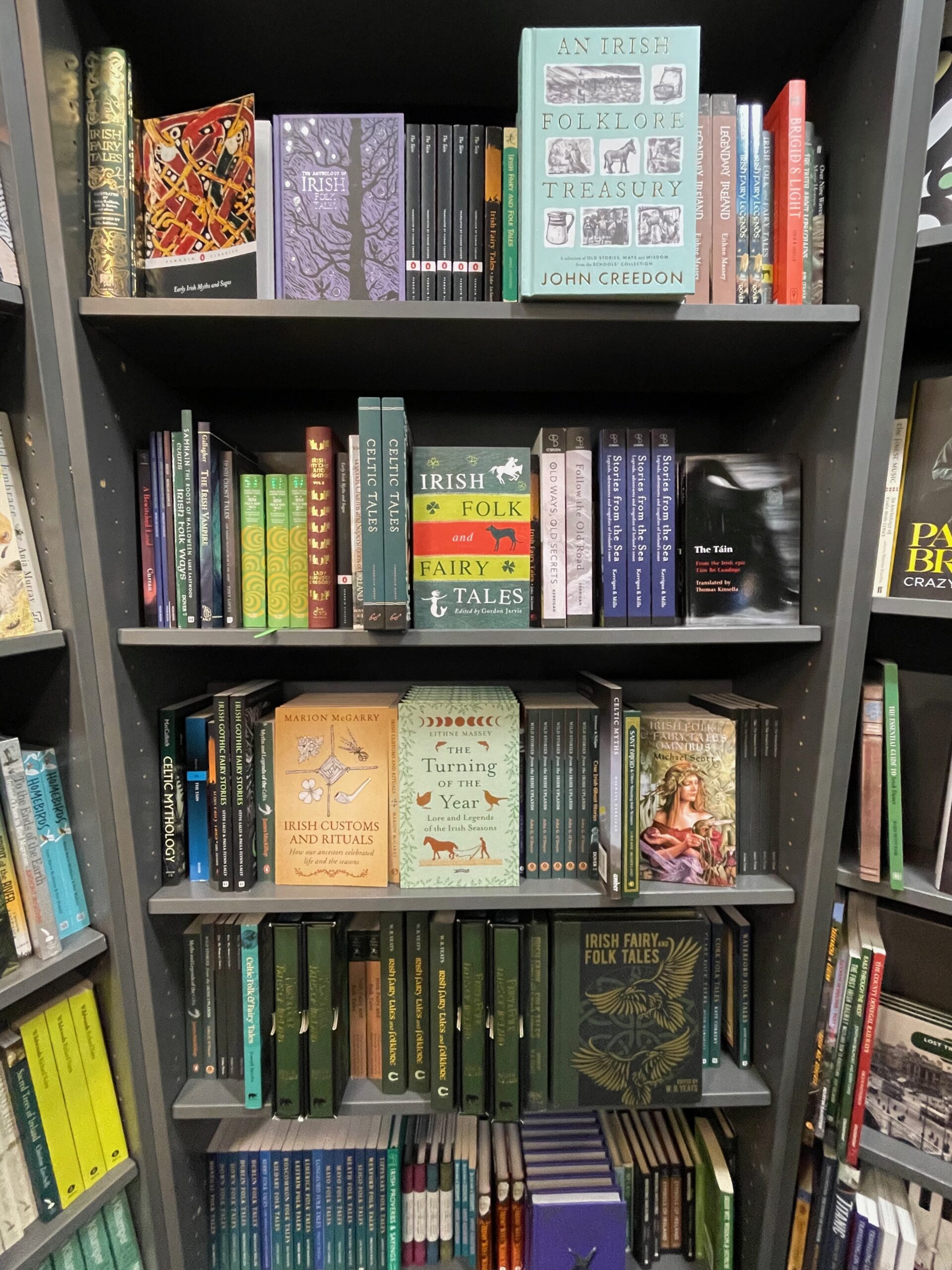 |
After busy hours of sightseeing we decided to stroll around St. Stephens Gardens which is a nice green retreat in the middle of the city. There is a lovely pond, playful area for children, many benches and plenty of lush greenery which is very relaxing. I noticed many Dubliners coming here to have a snack away from the office, families with children, people resting with the book. Interestingly, the design of Central Park, New York is based on a layout of St. Stephens Gardens (of course on a larger scale but here are the origins). This place is so tranquil that I strongly recommend coming here for at least 30 minutes, you can grab a cup of coffee take away and recharge here for further explorations.
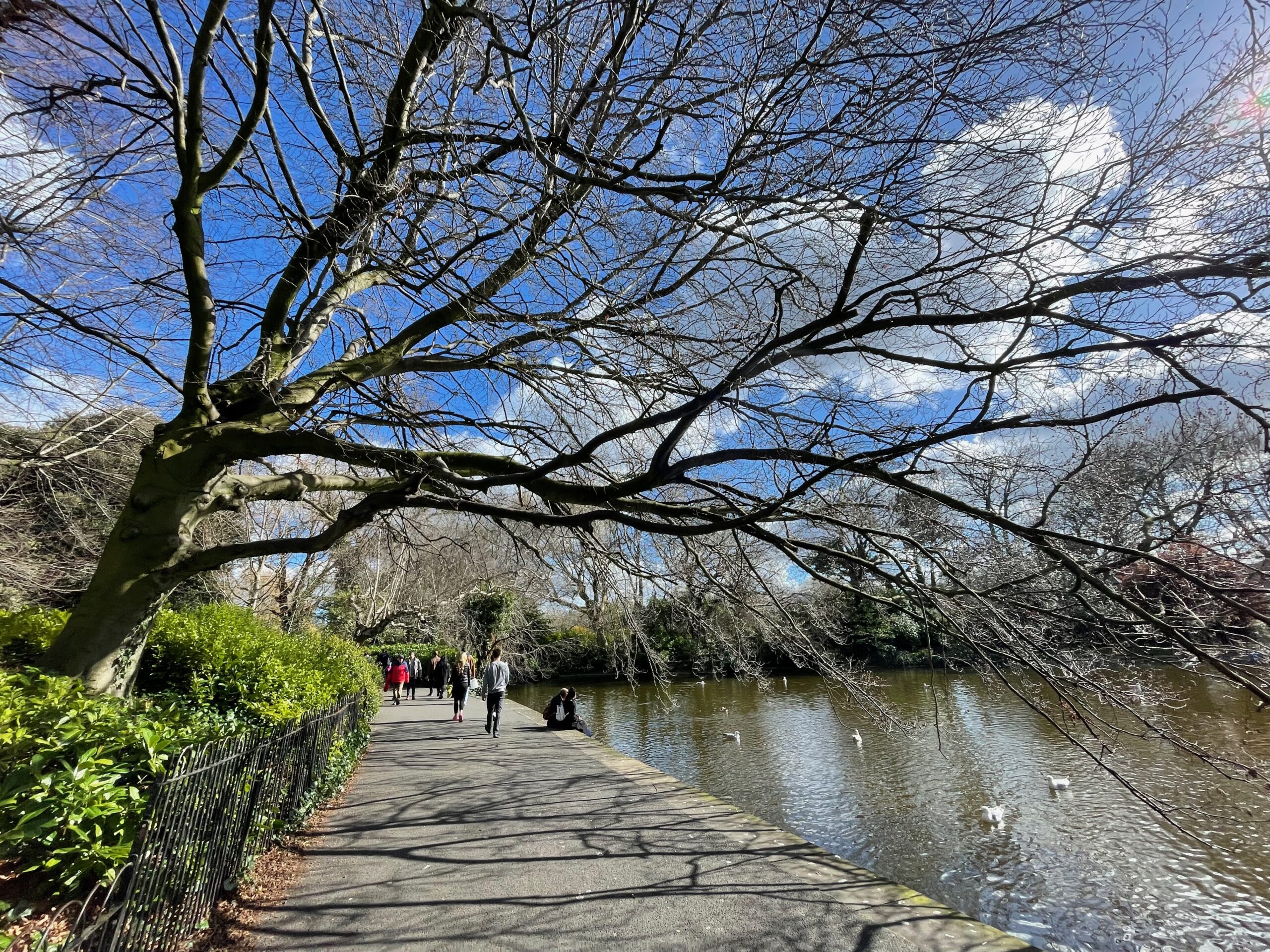 |
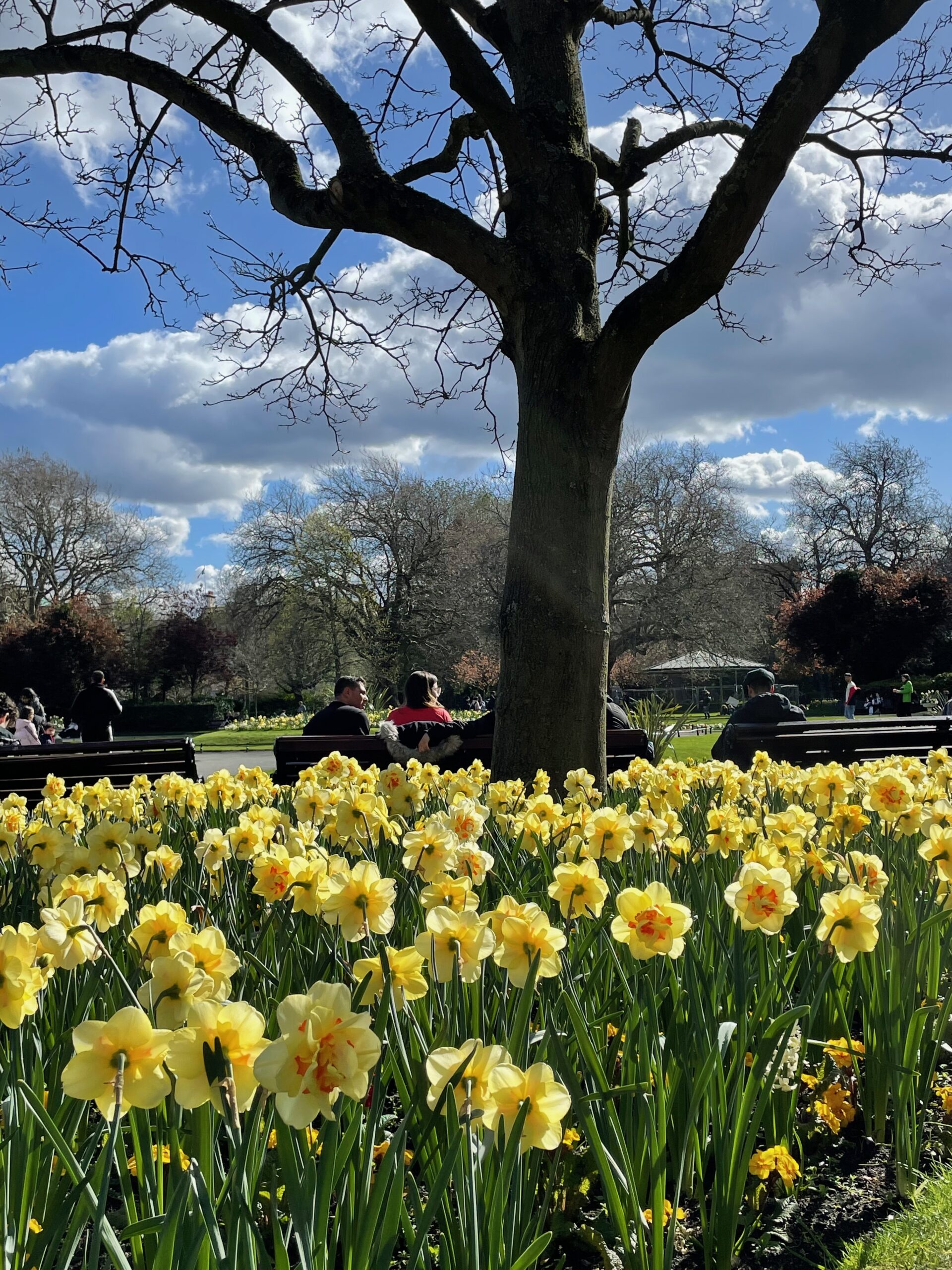 |
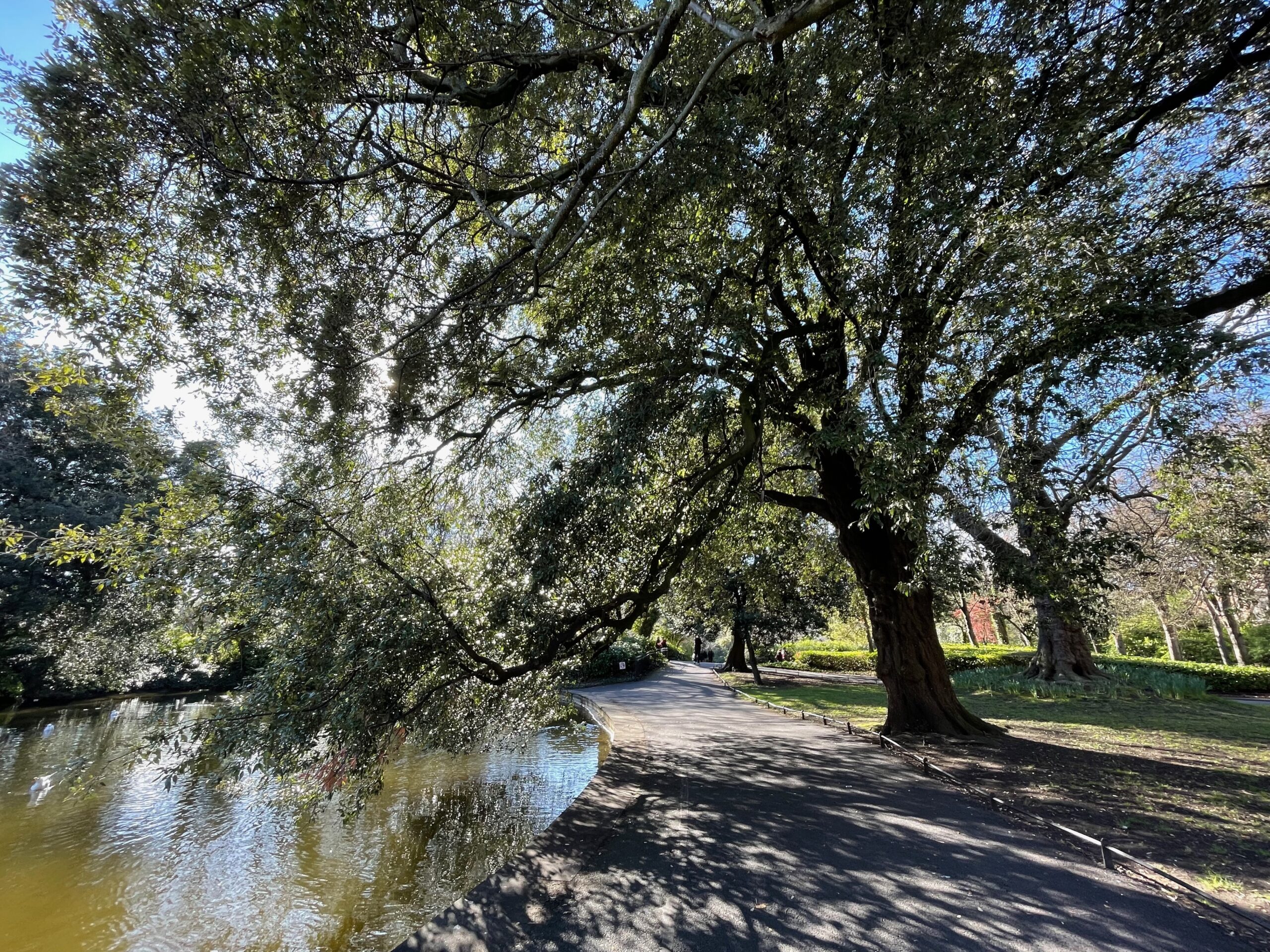 |
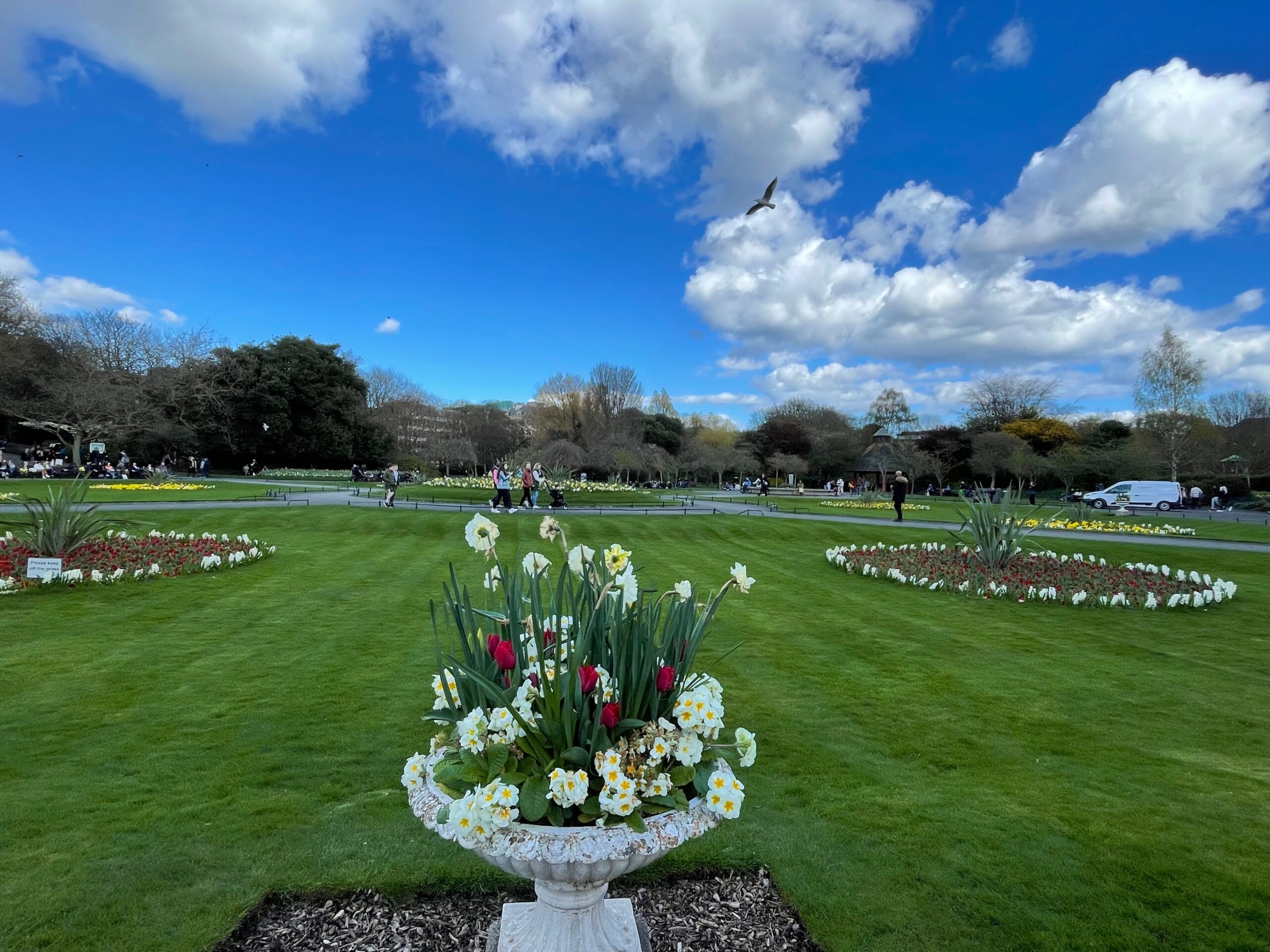 |
St. Stephens Garden is very close to the Georgian area with beautiful period architecture. Part of the district is very affluent with many embassies and international institutions having their headquarters here. I was amazed by the stunning Georgian buildings with stylish facades, I have impression that the most prestigious part of Brooklyn was inspired by this area. I had around one hour stroll along different streets (Mount Street Upper, Fitzwilliam Street, Bagot Street among many others). There are charming pubs and restaurants around so you can stop by to recharge and observe the locals (I had impression the district was less touristy and more residential at some points).
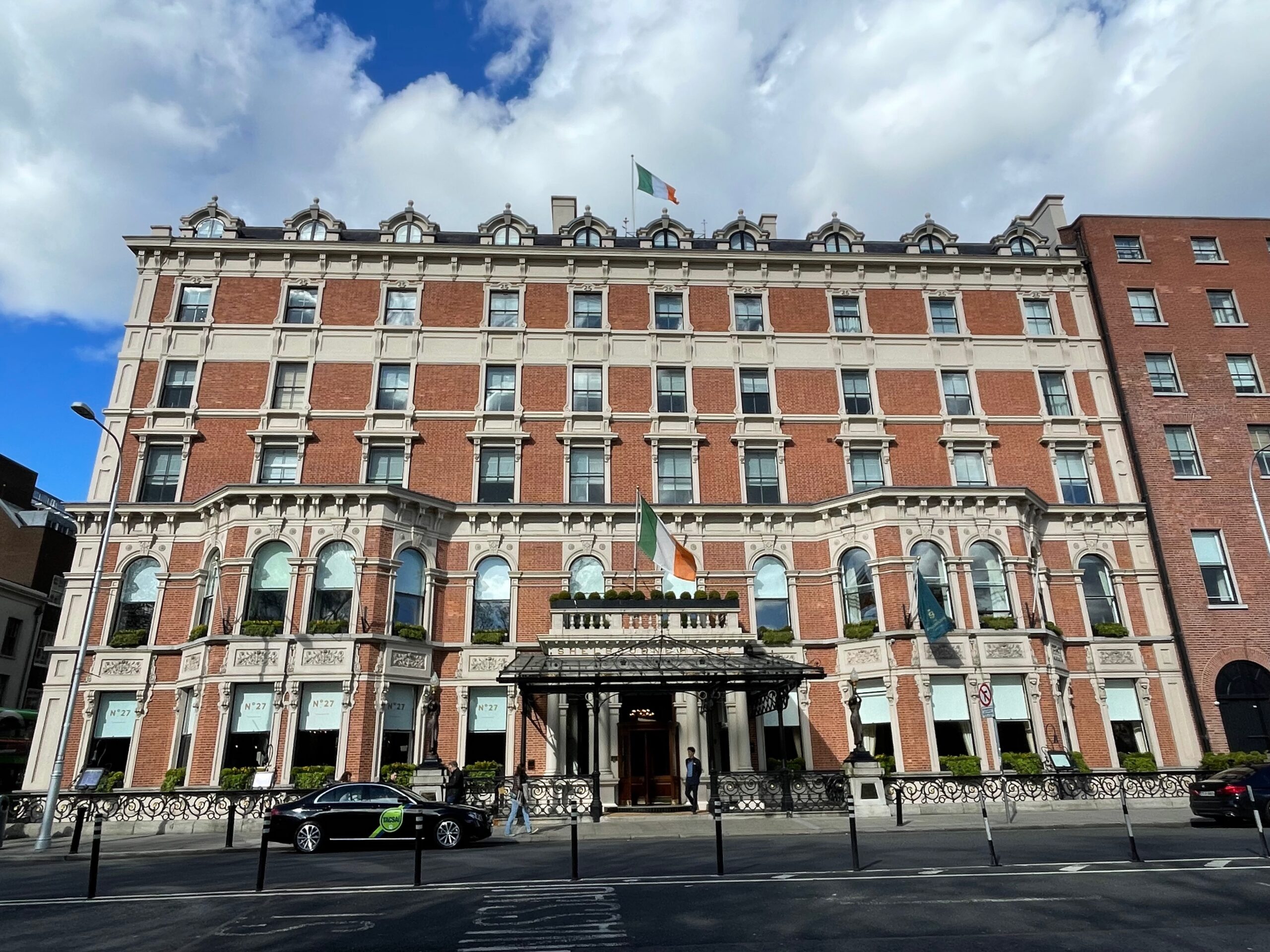 |
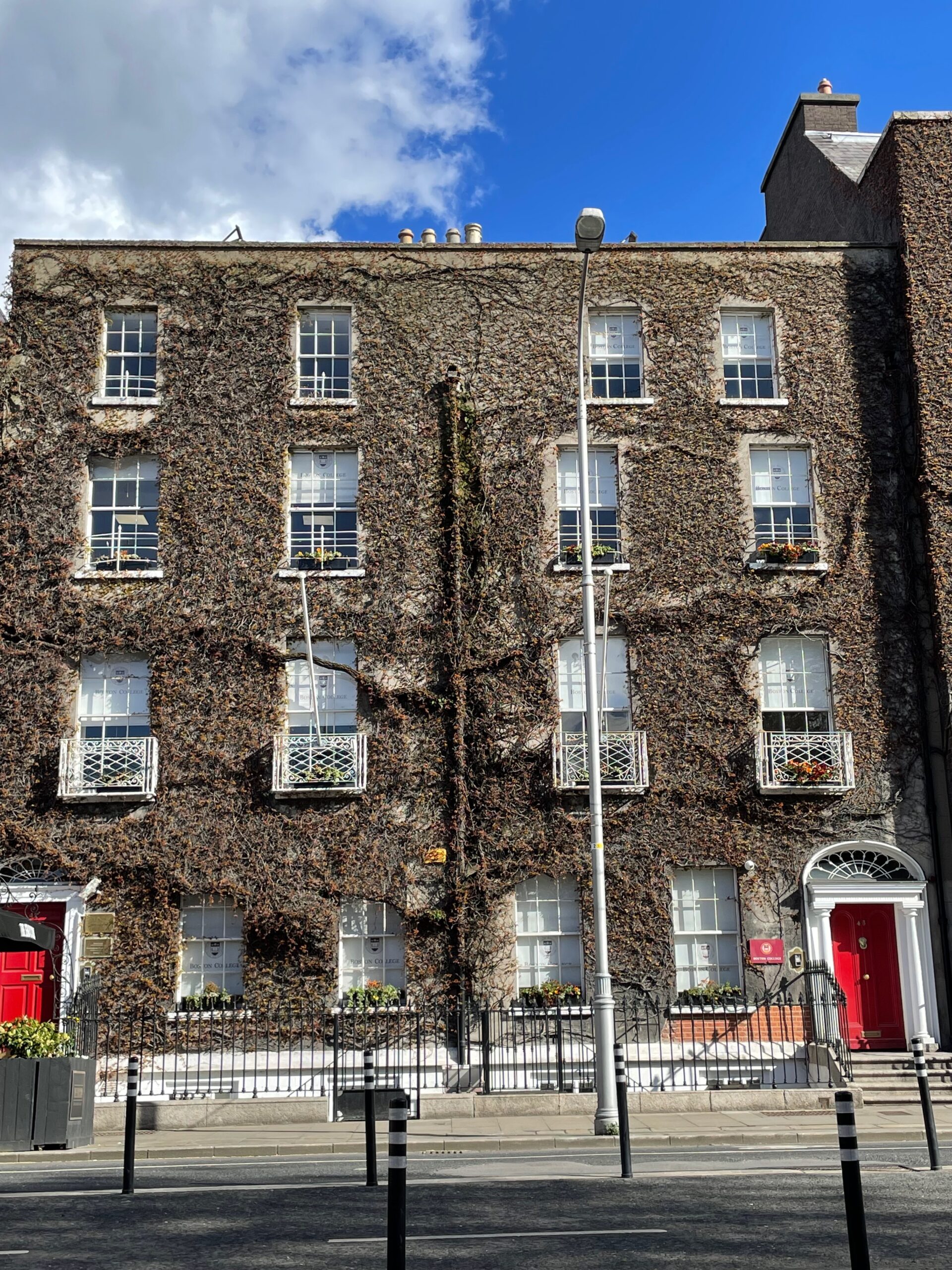 |
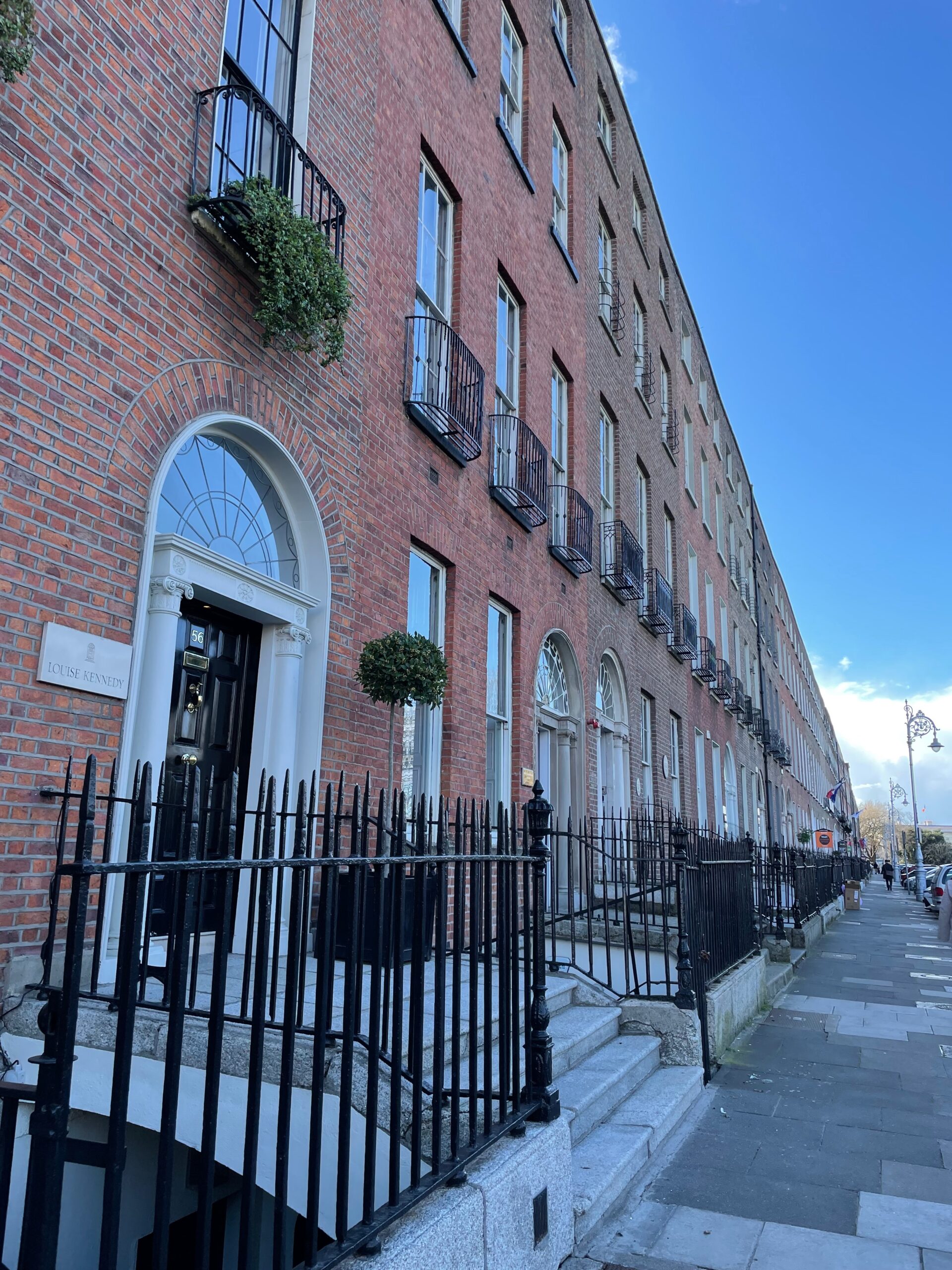 |
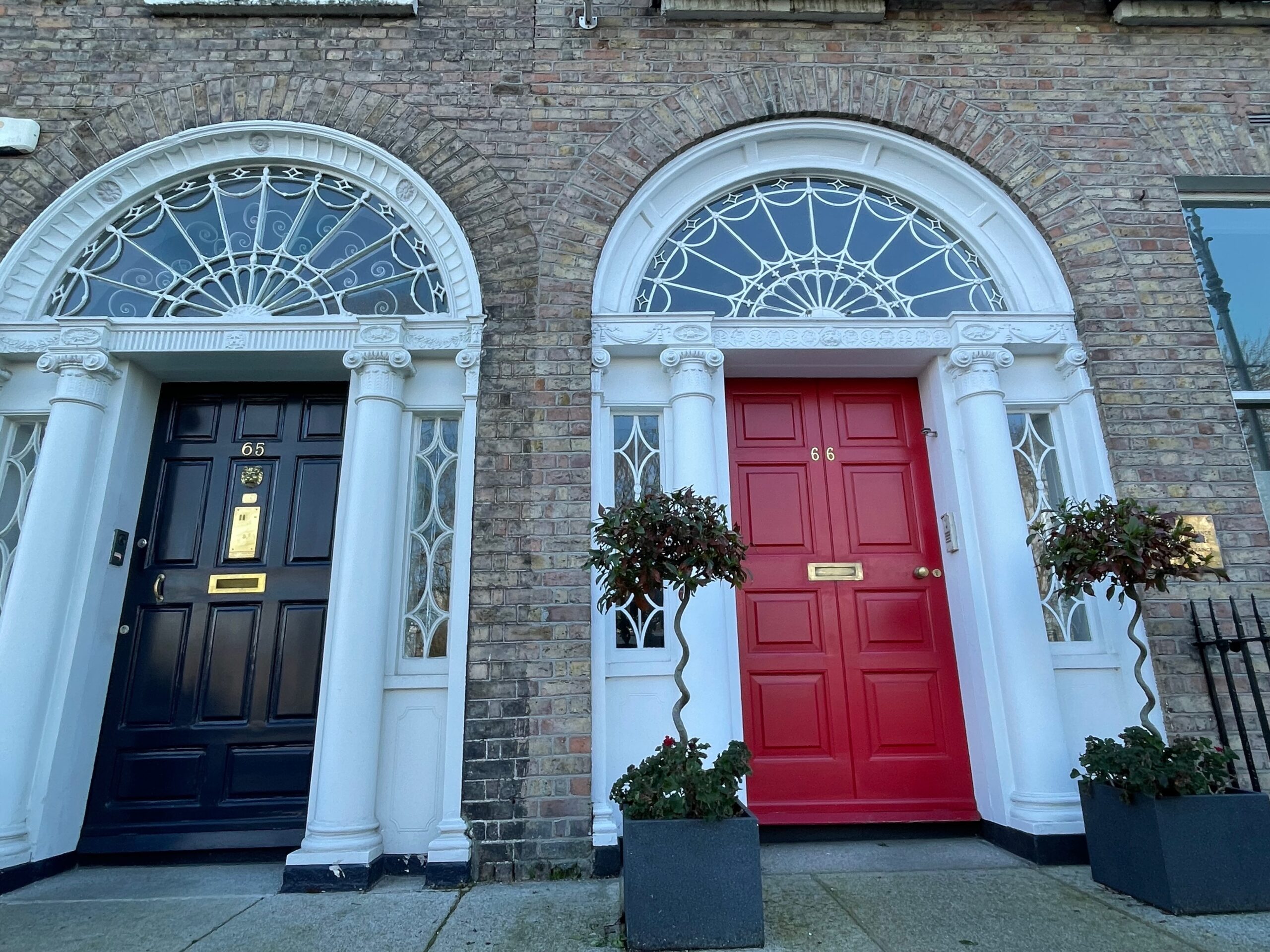 |
When walking back I re-entered St. Stephens Gardens and went in direction of Grafton street which is a big shopping area perfect to get some souvenirs. Ireland is famous for its traditional wool sweaters, tweed garments, crystals, excellent linen, blankets and home accessories made of wool, whisky and Irish beers. Check the specialty stores around, if there is no Mark and Spencer in your country I also recommend visiting their large store for good deals.
We have finished our day in the Tempe Bar district which is famous of the numerous pubs serving Irish traditional drinks and typical Irish dishes. The actual The Temple Bar is a pub and was established in 1840 and nowadays serves all types of alcohol including beer, liquor, and over 450 different kinds of rare whiskeys and is considered as the bar having Ireland’s largest whiskey collection. The lively live music and crowds of both locals and tourists make a joyful atmosphere, note however, that all the history and Irish vibe comes with a price tag. This iconic bar is rather expensive, I recommend trying something rare here which is difficult to find in other places and then proceed to another pub. You can easily explore few places in the area and stop somewhere for a dinner, the pubs are also restaurants, most of them serve traditional Irish dishes, have live music and are filled with plenty of locals enjoying their evening.
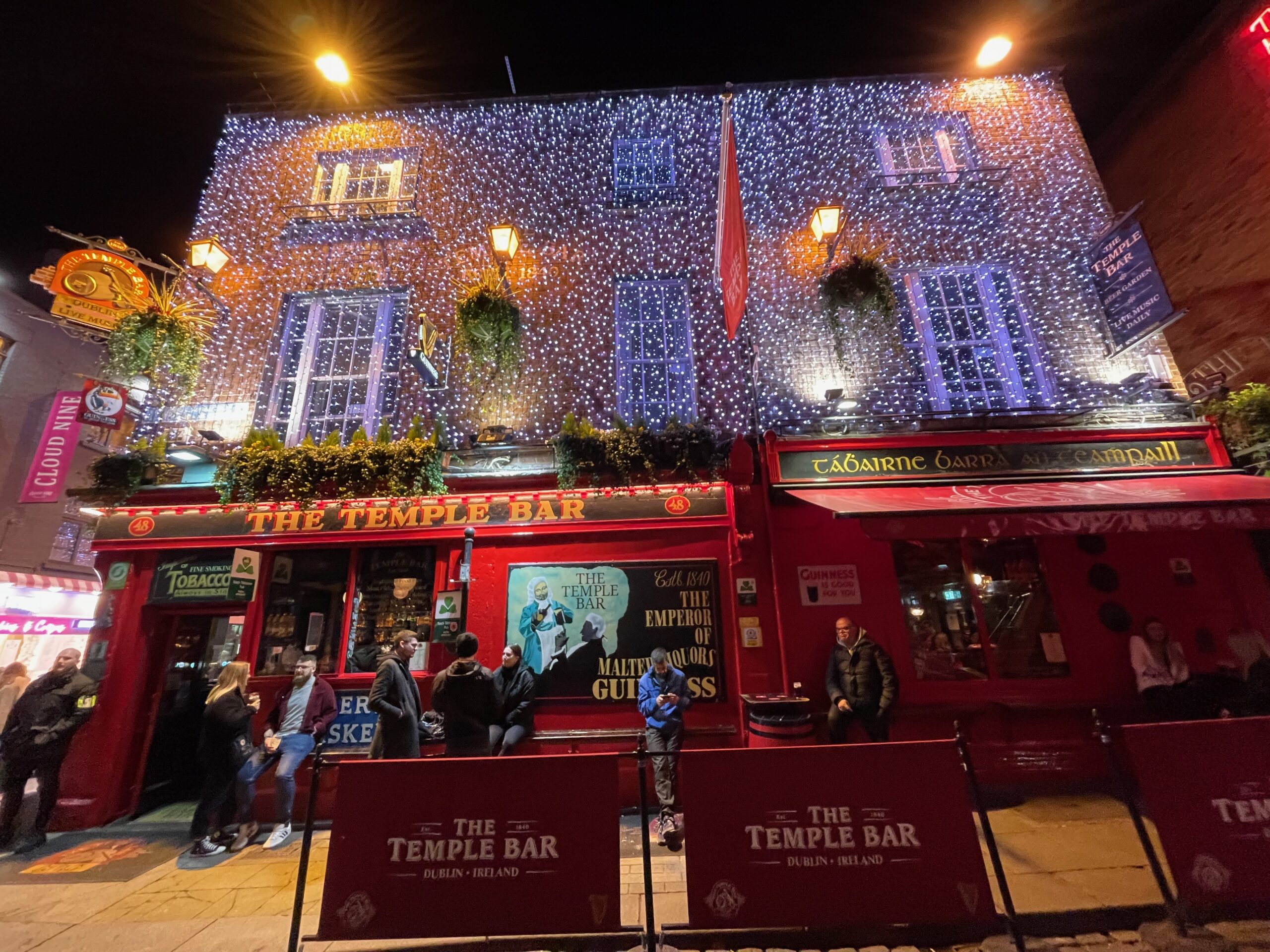 |
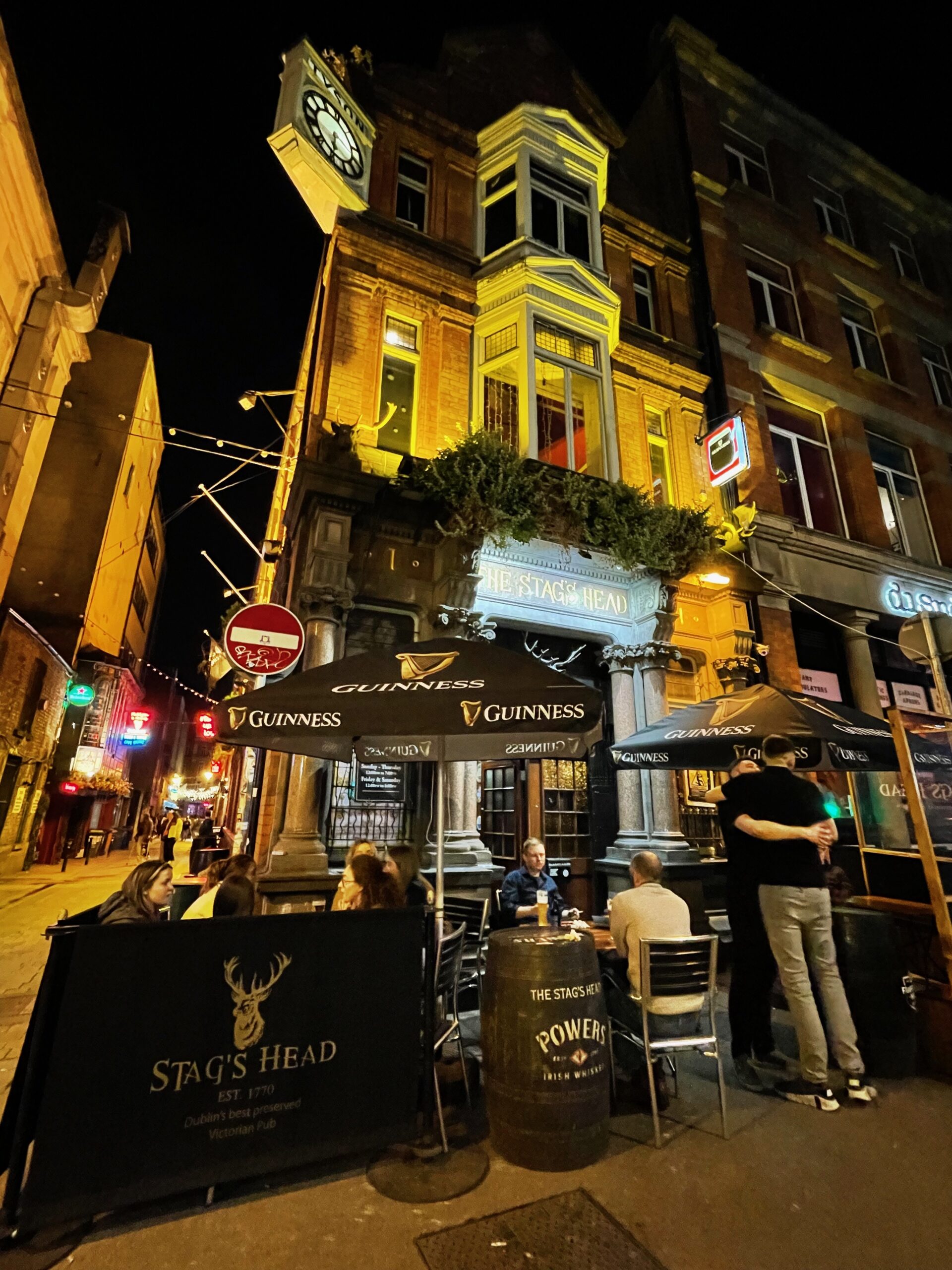 |
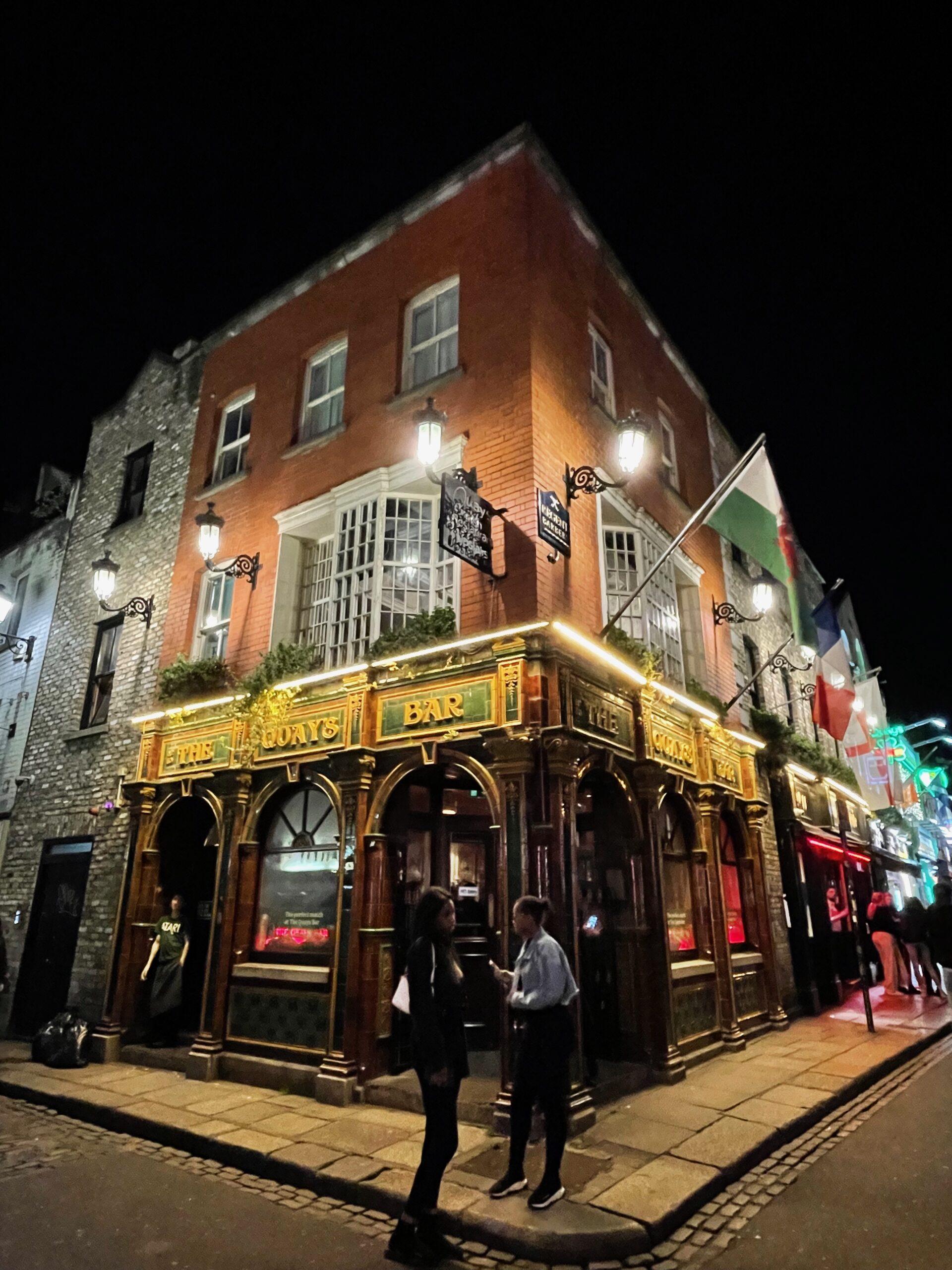 |
 |
If you search for more cameral places, try some pubs in different parts of the city, I particularly liked the Mulligan’s pub established in 18th century and located near the Tara train station. There was no loud music nor crowds, we were surrounded mostly by the locals and the interior was definitely the old world style. You can have here your quieter more cameral evening with friends where you can actually here each other when talking, the barman is knowledgeable and you can rely on his suggestions to try some new drinks. Highly recommended!
Day 2 (Farmleigh House and Estate, Dublin’s state museums and distilleries)
The second day we visited in the morning Farmleigh House which once belonged to influential Guinness family and nowadays it’s the official Irish state guest house. The manor offers guided tours (around 45 minutes length) and the gardens are free to visit (no entrance fee). Farmleigh is a spectacular example of grand houses from the Edwardian period. Originally, Farmleigh was rather small Edwardian house constructed in the 18th century, until Edward Cecil Guinness, great-grandson of Arthur Guinness, commissioned grand renovations and transformed the building into elaborate residence. The new building merged various architectural styles. If you go for a house tour you will be able to see the exquisite interiors with many of the artworks and furnishings collected by Guinness. Particularly precious is the library with large collections of books (many of them very rare) and old manuscripts since some family members were avid enthusiasts of rare books acquisitions.
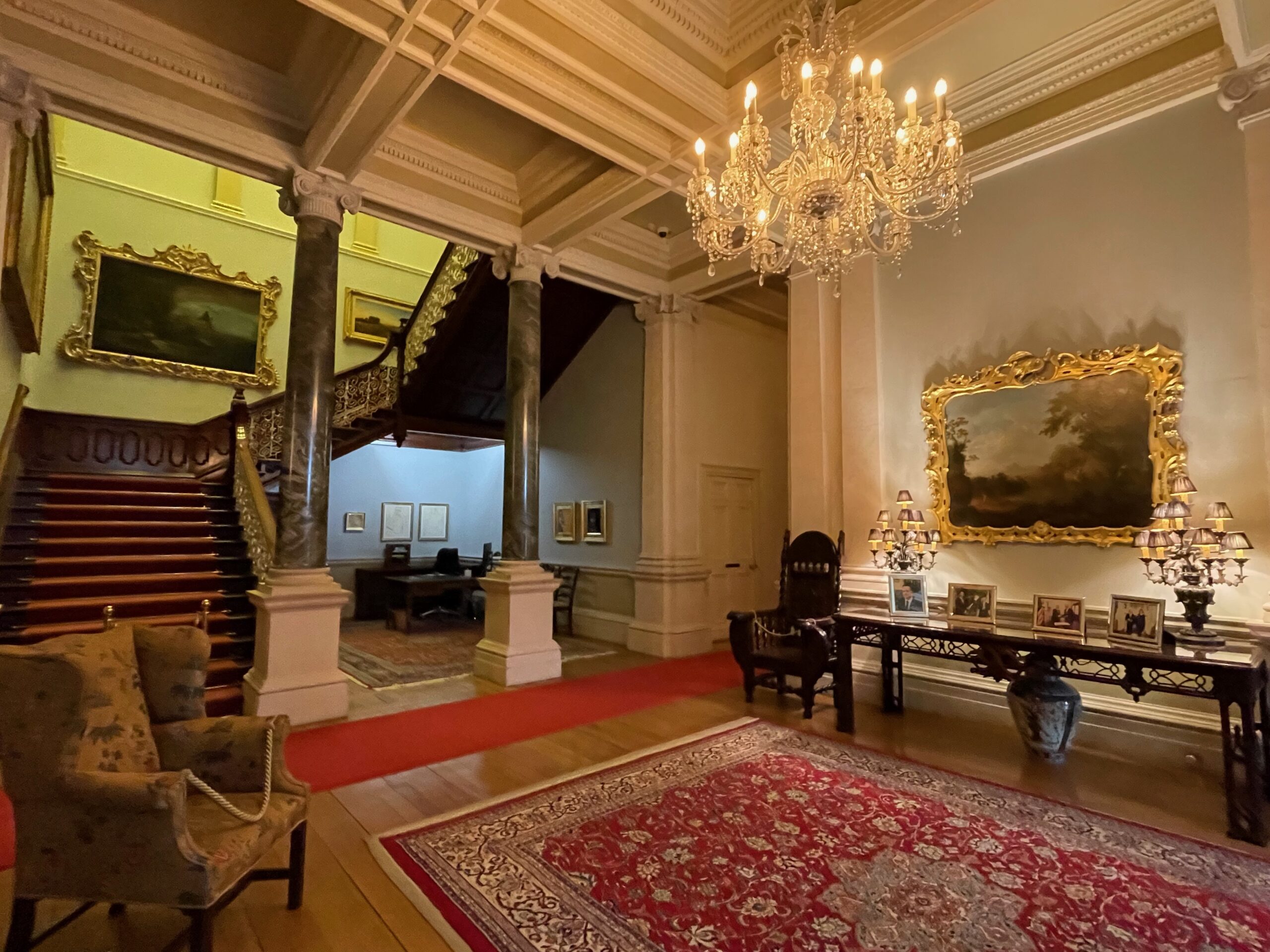 |
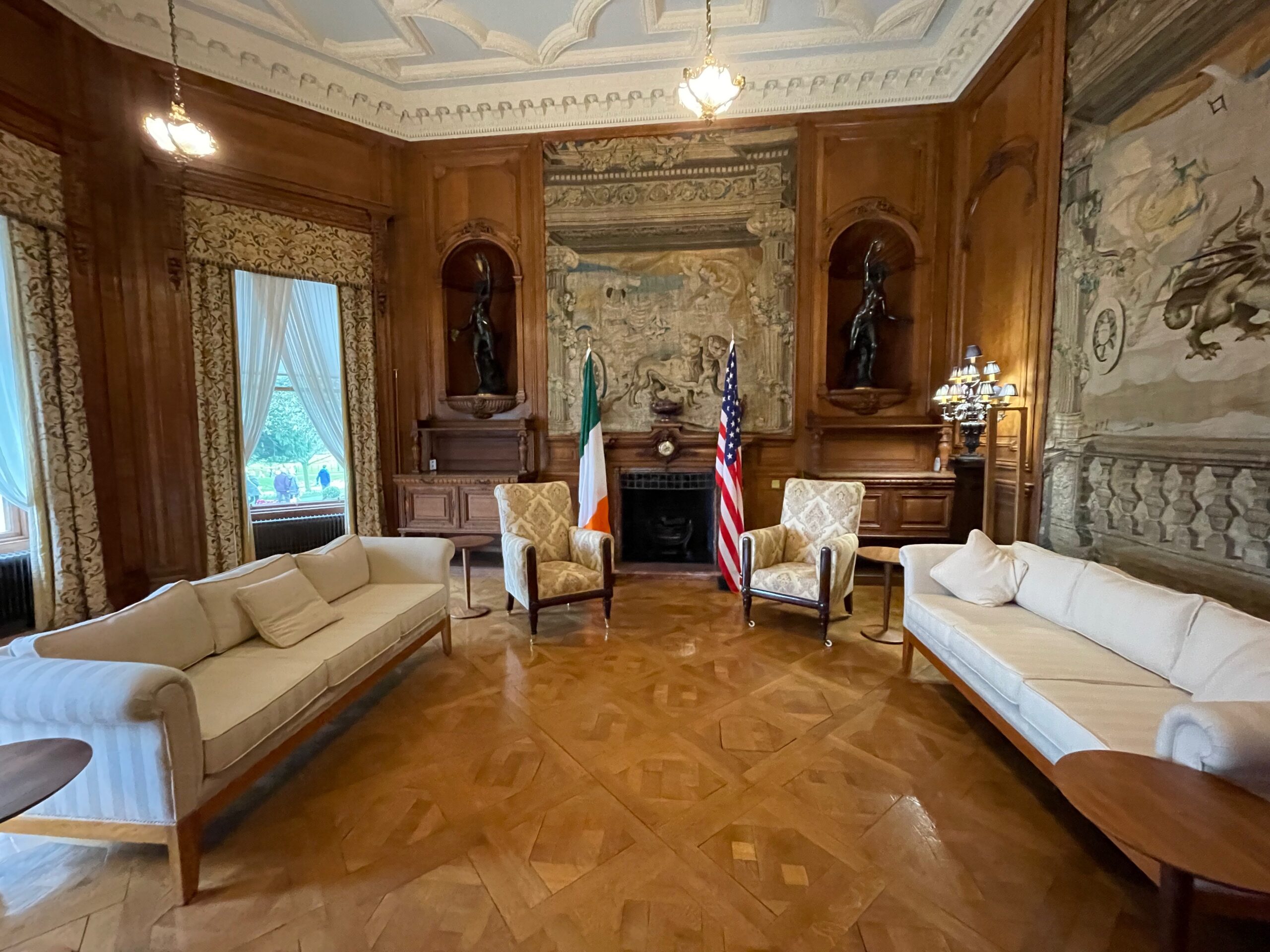 |
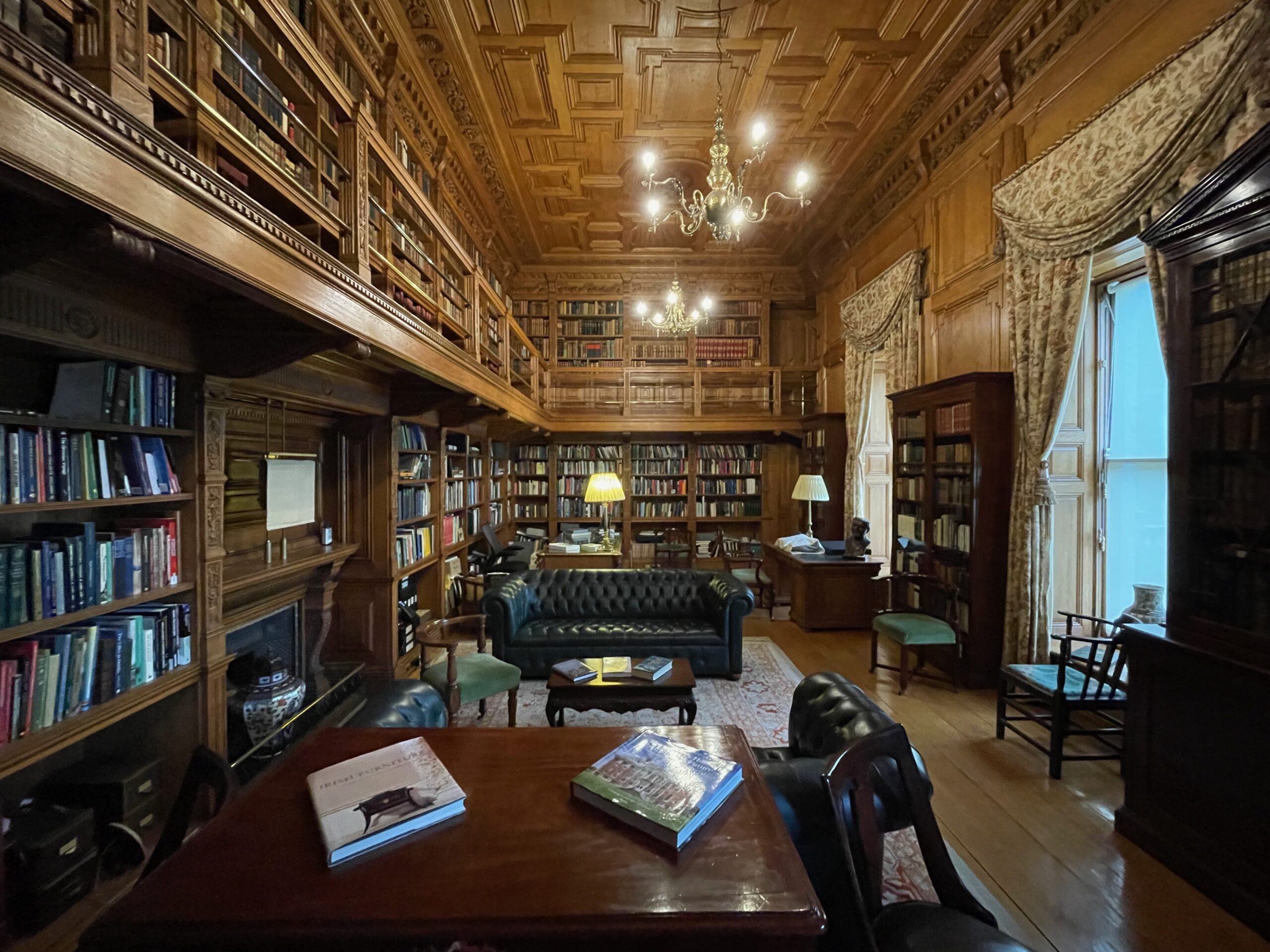 |
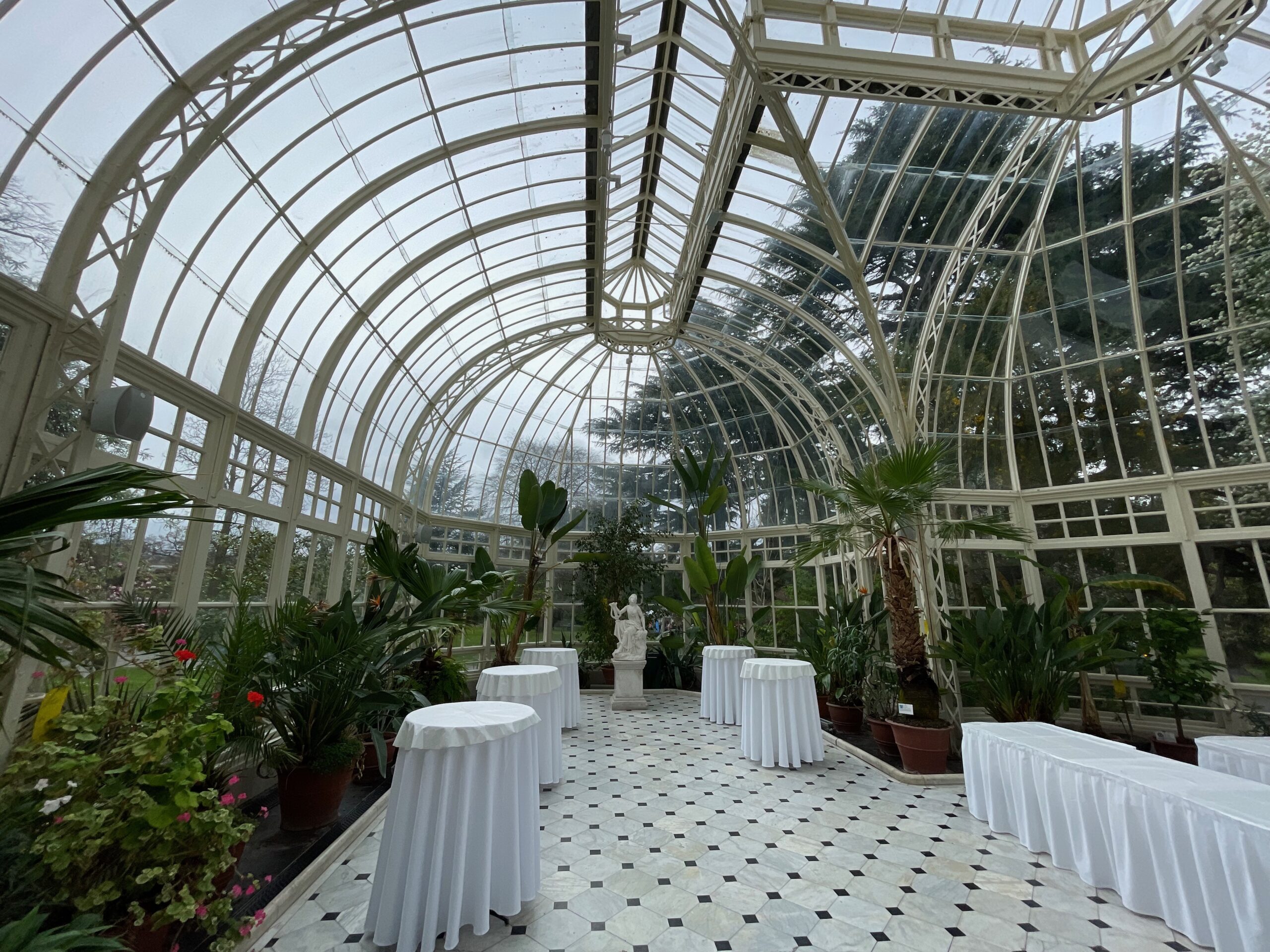 |
Nowadays, the residence serves as a guesthouse to important guests of Irish state. Many meetings with visiting heads of State and dignitaries are organized here. As you walk around the house, you’ll see many photographs with presidents, royalty and other distinguished guests on the display. When planning your visit, check the residence’s calendar. During state meetings, Farmleigh is closed for tourists so you may want to adjust your schedule in advance.
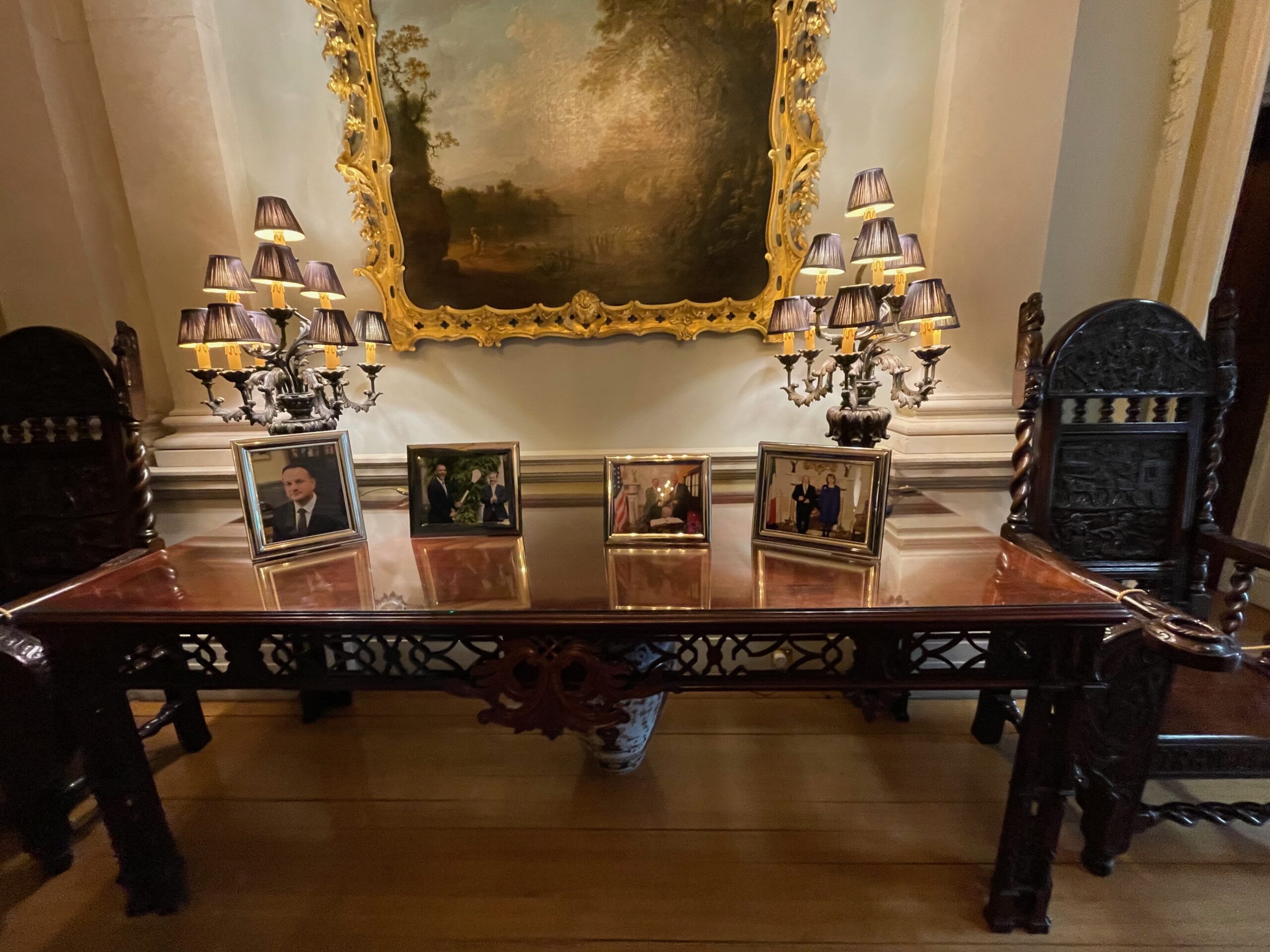 |
 |
After a house tour (which I find really interesting, you’ll learn a bit about the Guinness family and their life in the residence as well as about its current function), stay for another hour to check out the gardens. The vast pleasure-grounds have wonderful Victorian and Edwardian ornamental features, I recommend going to walled and sunken gardens, there are also relaxing lakeside walks if you want to spend a bit more time in nature. I saw on the map of the estate that the premises possess a working farm and that you can find also some cute little shops with local food produce but I didn’t visit those places myself so can’t give any opinion.
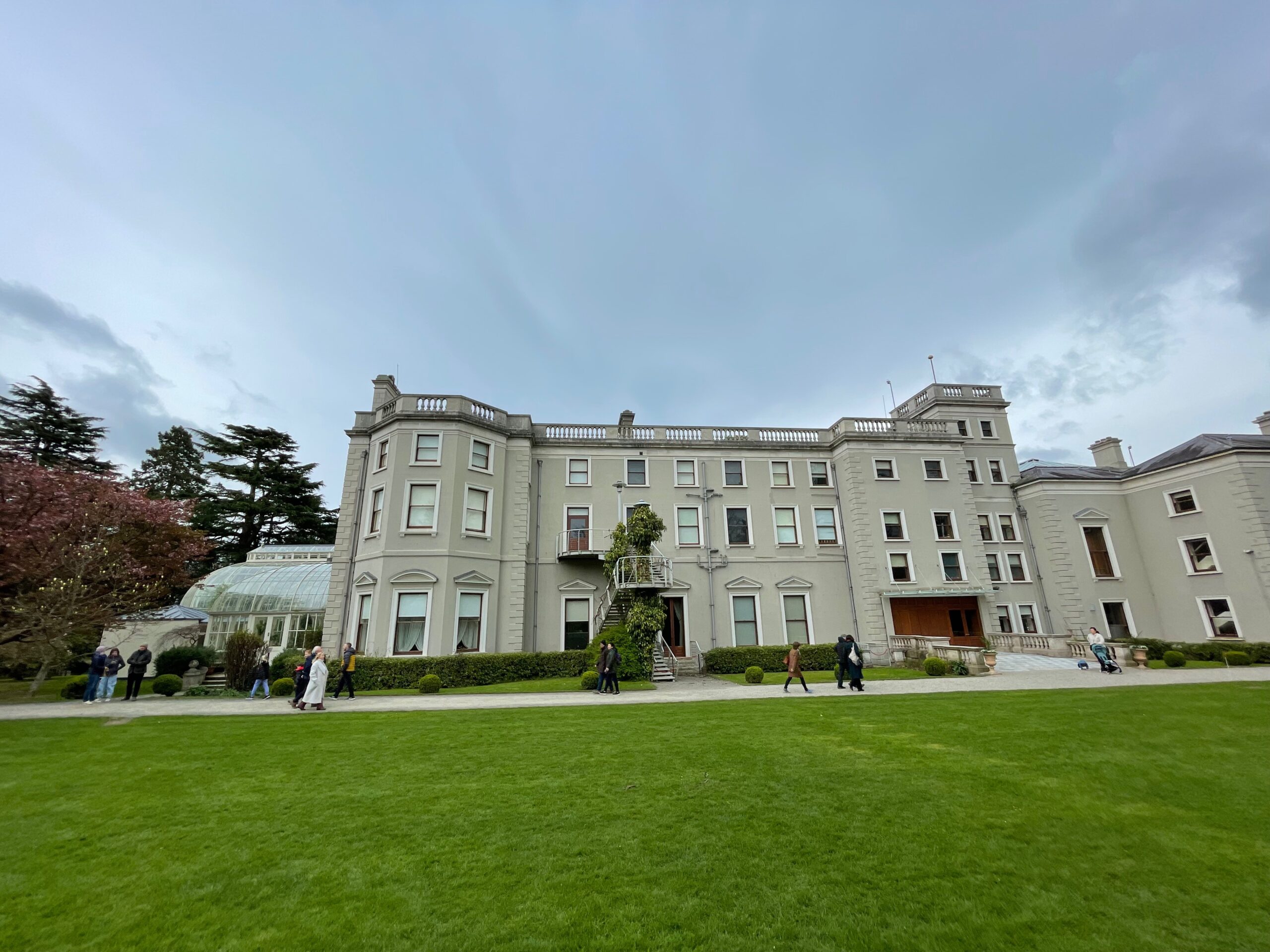 |
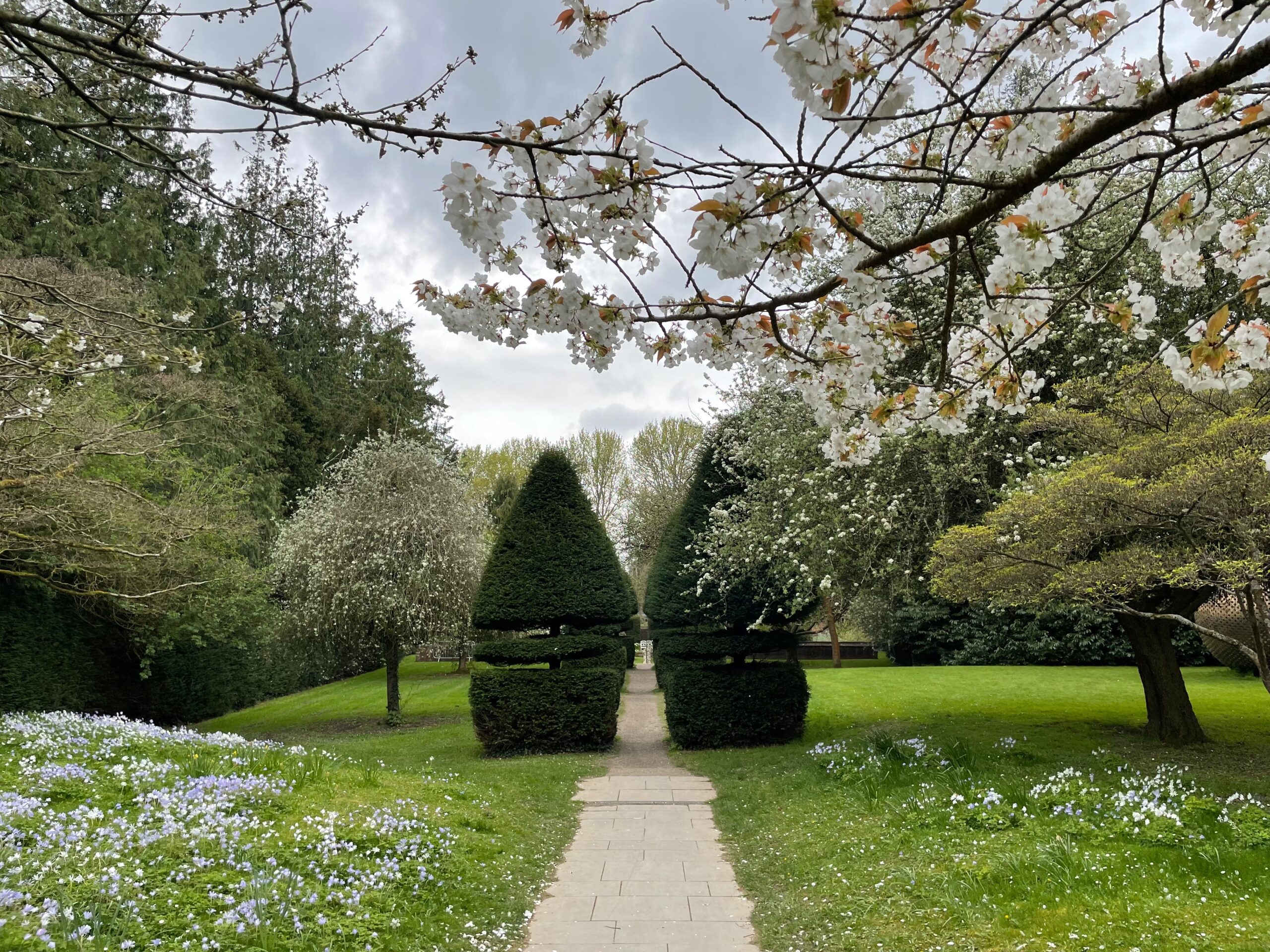 |
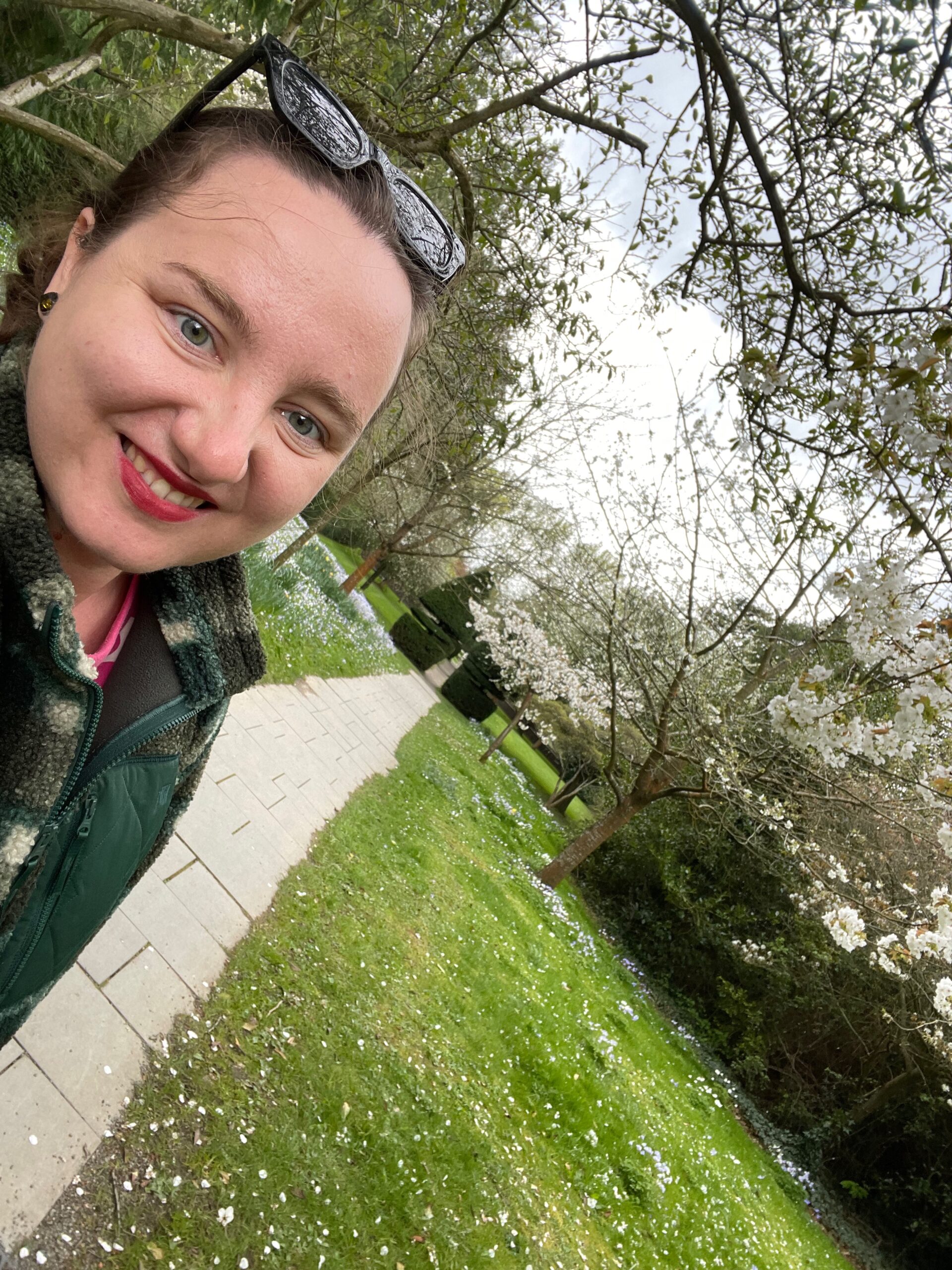 |
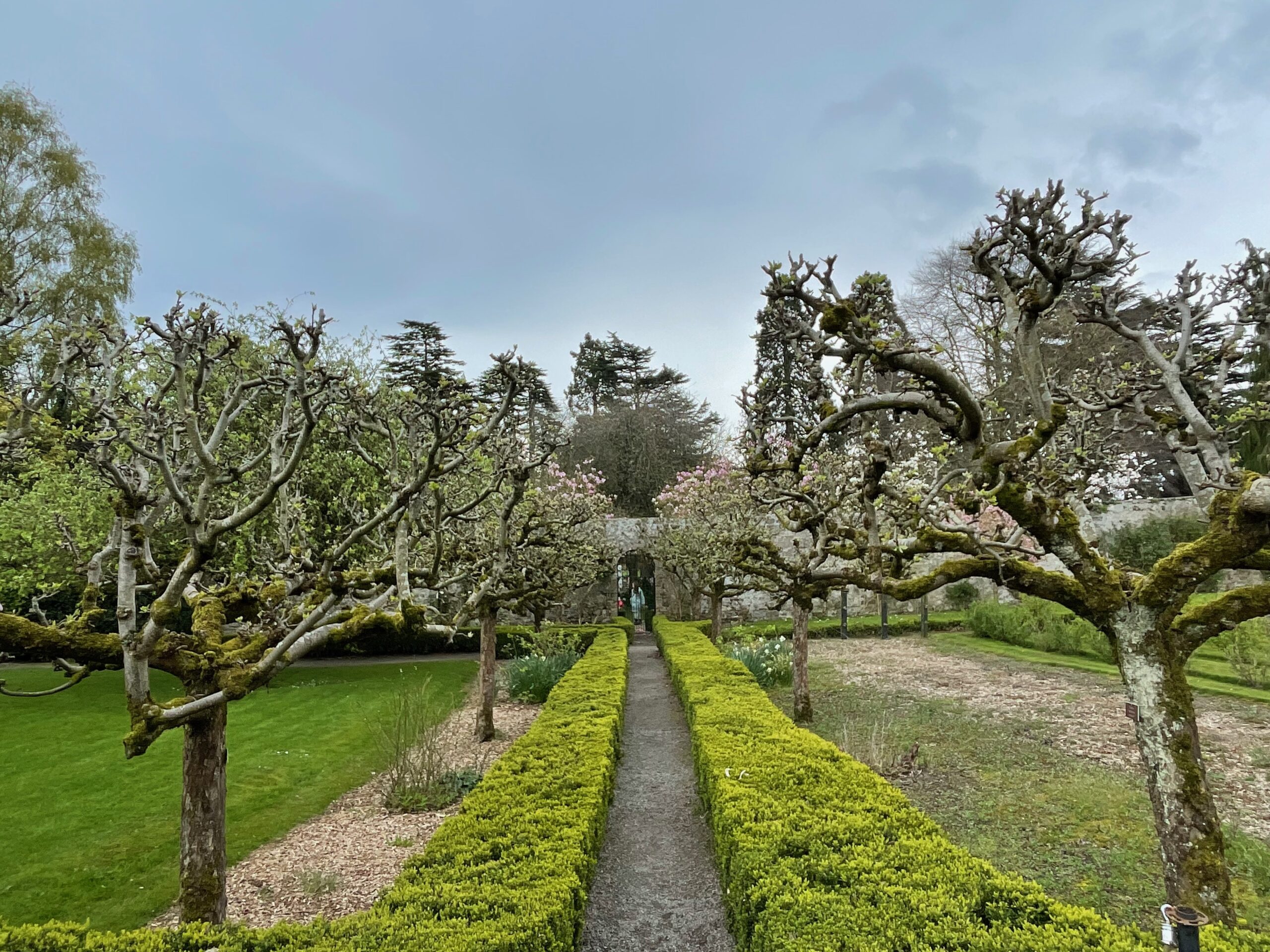 |
Afterall, I recommend Farmleigh Estate since it gives you a glimpse of a grand Edwardian house. I find it a unique opportunity to see how lived one of the most affluent Irish families, Guinness family is one of the most prominent in entire Ireland.
The only difficulty in my opinion is to access the premises when not having a car. The estate is located to the north-west of the Phoenix Park, in Castleknock so you need to cross entire Phoenix Park and then still walk a bit to get to the house. This is few kilometers walk and it takes more than one hour which is quite long. Alternatively, you can take a Dublin Bus number 37 from the city centre and get off at the Castleknock Gate. Then continue through the Phoenix Park and take the narrow pedestrian pathway through the field to your immediate right. I suggest to check the official website of Farmleigh Estate for precise and up to date guidance, however I find that the way there and back takes a bit too long, especially if you don’t stay many days in Dublin. Some time saving solution may be to take a taxi at least one way which makes even more sense if you go with friends and share the cost (Irish taxis are quite pricey though).
On the positive side, stroll to Farmleigh will allow you to spend a lot of time in the nature as you cross entire Phoenix Park which I recommend visiting even if you don’t plan the Guinness’ former house.
After explorations of Farmleigh Estate, I recommend checking out of the state museums which in Dublin are free of charge which is a nice perk. You can choose from National Museum of Ireland branches – Archaeology, Decorative Arts and History, Natural History or Country Life, opt for a venue which interests you the most. The museums are open until 6pm so don’t postpone your visit until too late to ensure you have enough of time to enjoy the exhibitions.
The last (but not least) place we visited was Jameson Distillery Bow St. which is an Irish whisky tourist attraction. The experience is a combination of educative guided tour during which you learn how the production process of whisky looks like and Jameson whisky tastings. In fact, the tour is more about the tasting than it’s an actual museum (the building was in the past a working Jameson distillery but now their main facilities are outside of the city). The prices for the tours seem to be expensive at the first glance but the cost of whisky served during the tasting matches the price so in reality the tickets pricing is very fair. Apart of the sampling during the tour you also get a coupon for complimentary drink in a bar downstairs which is a space where you can just come without making a guided visit, from my experience portions served Jameson Distillery were very generous.
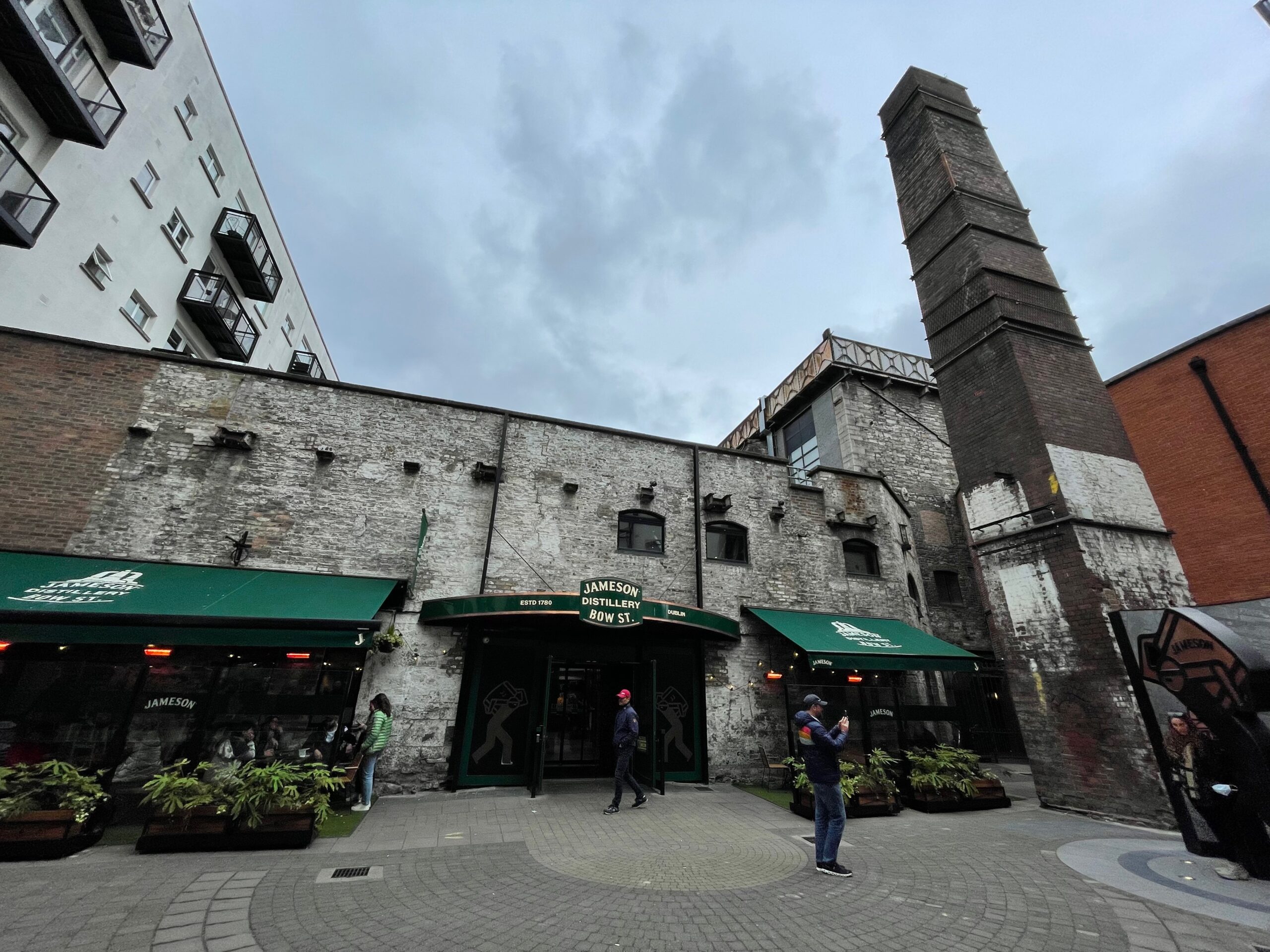 |
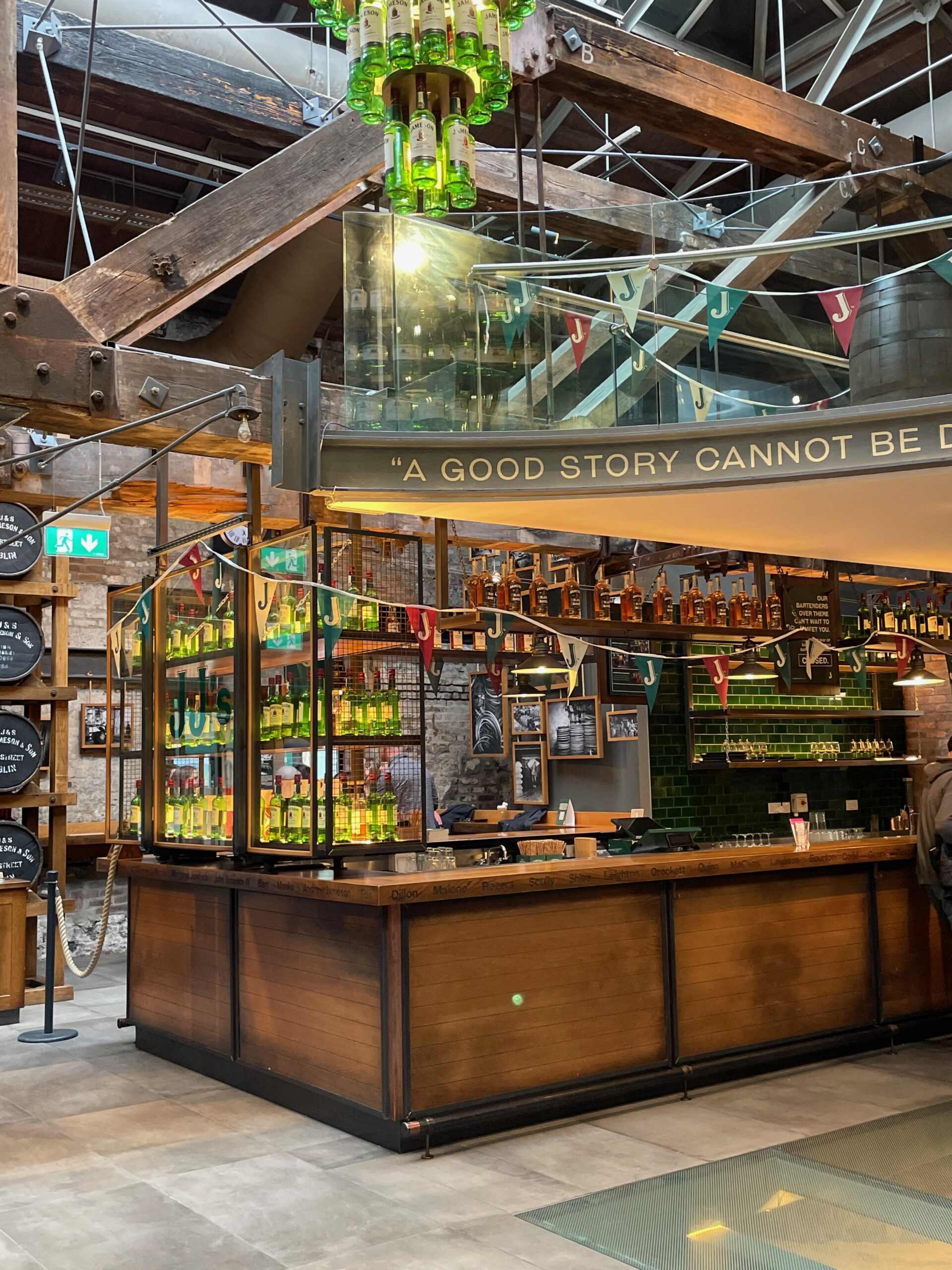 |
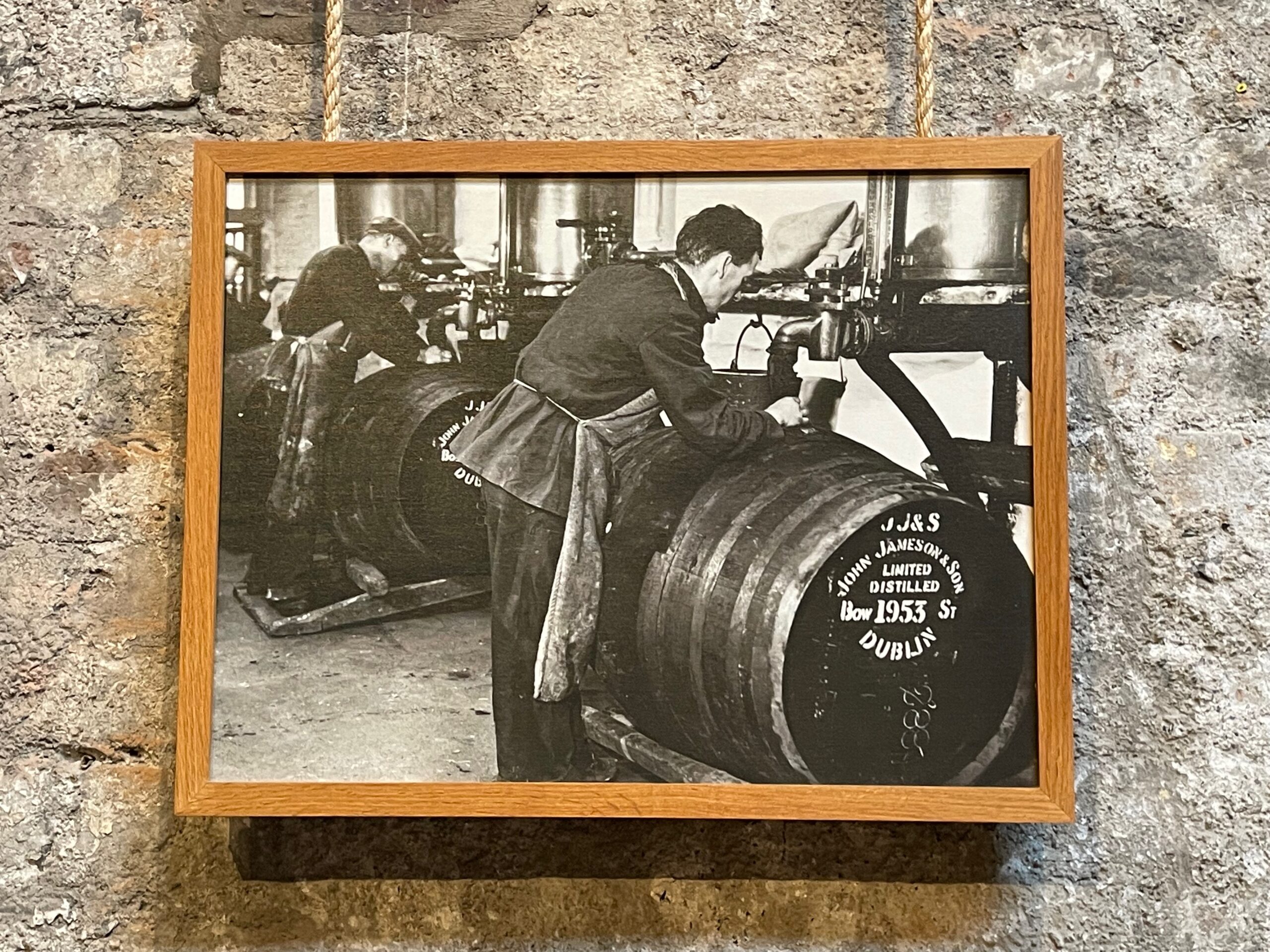 |
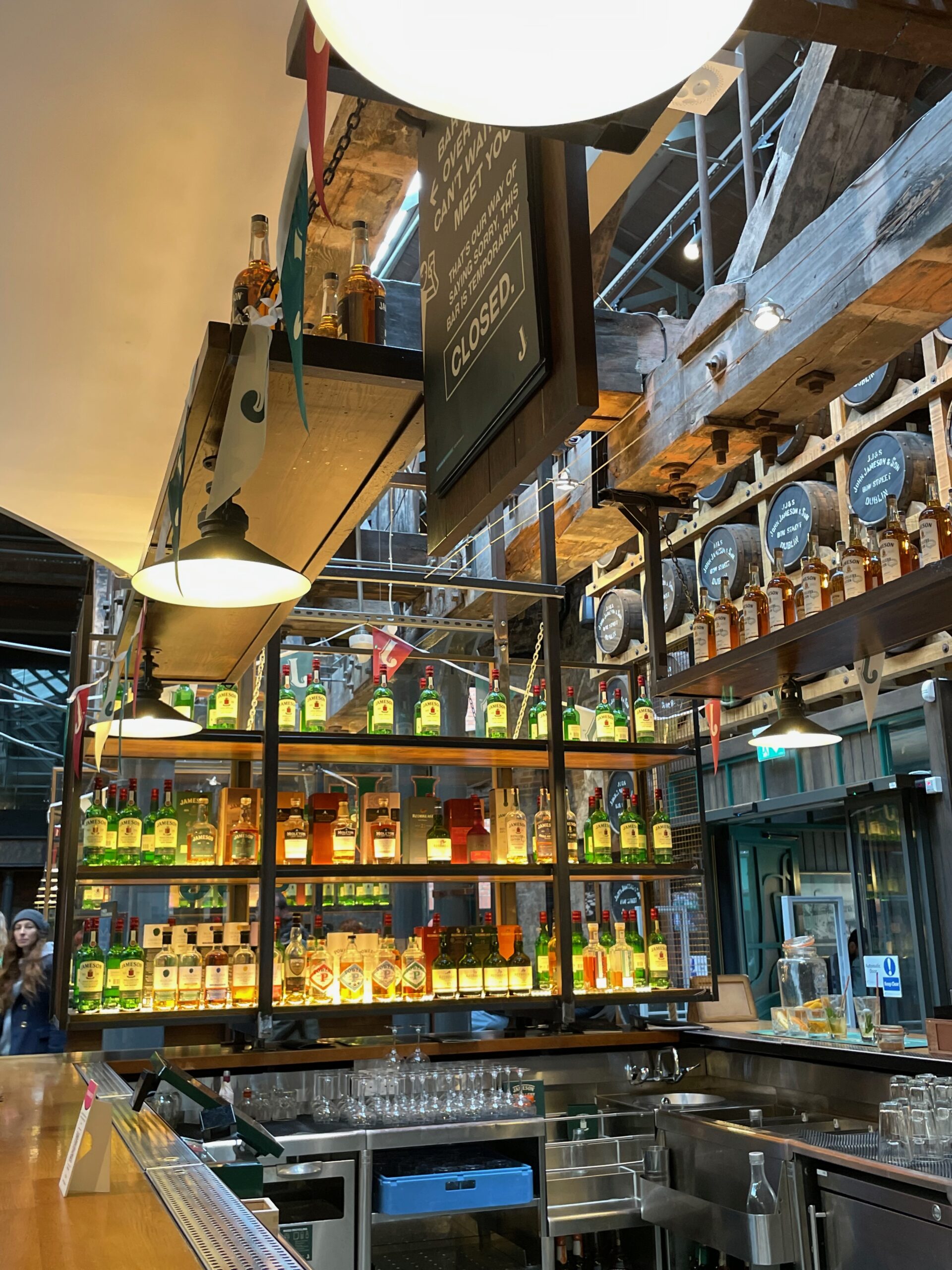 |
Just before the ticket office there are small leaflets with tourists attractions, if you search around you will find them cards with 10% discount for the guided tours so be vigilant if you want to save few euros. As mentioned before, you can also go to Teeling Whiskey Distillery or Pearse Lyons Distillery and I’m sure there’s more of them in Dublin’s area so it’s best to do some research in advance to choose the most interesting venues for you.
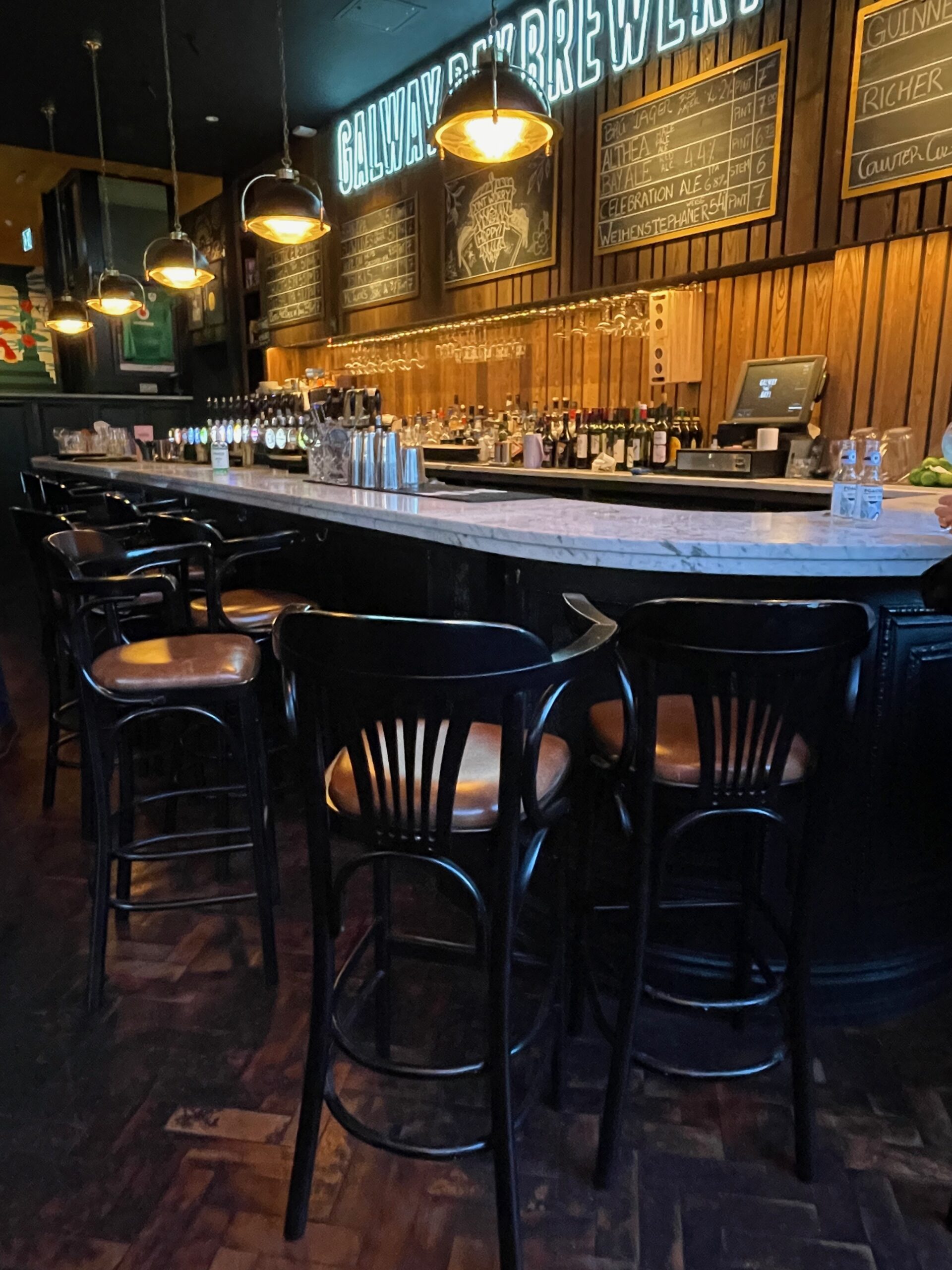

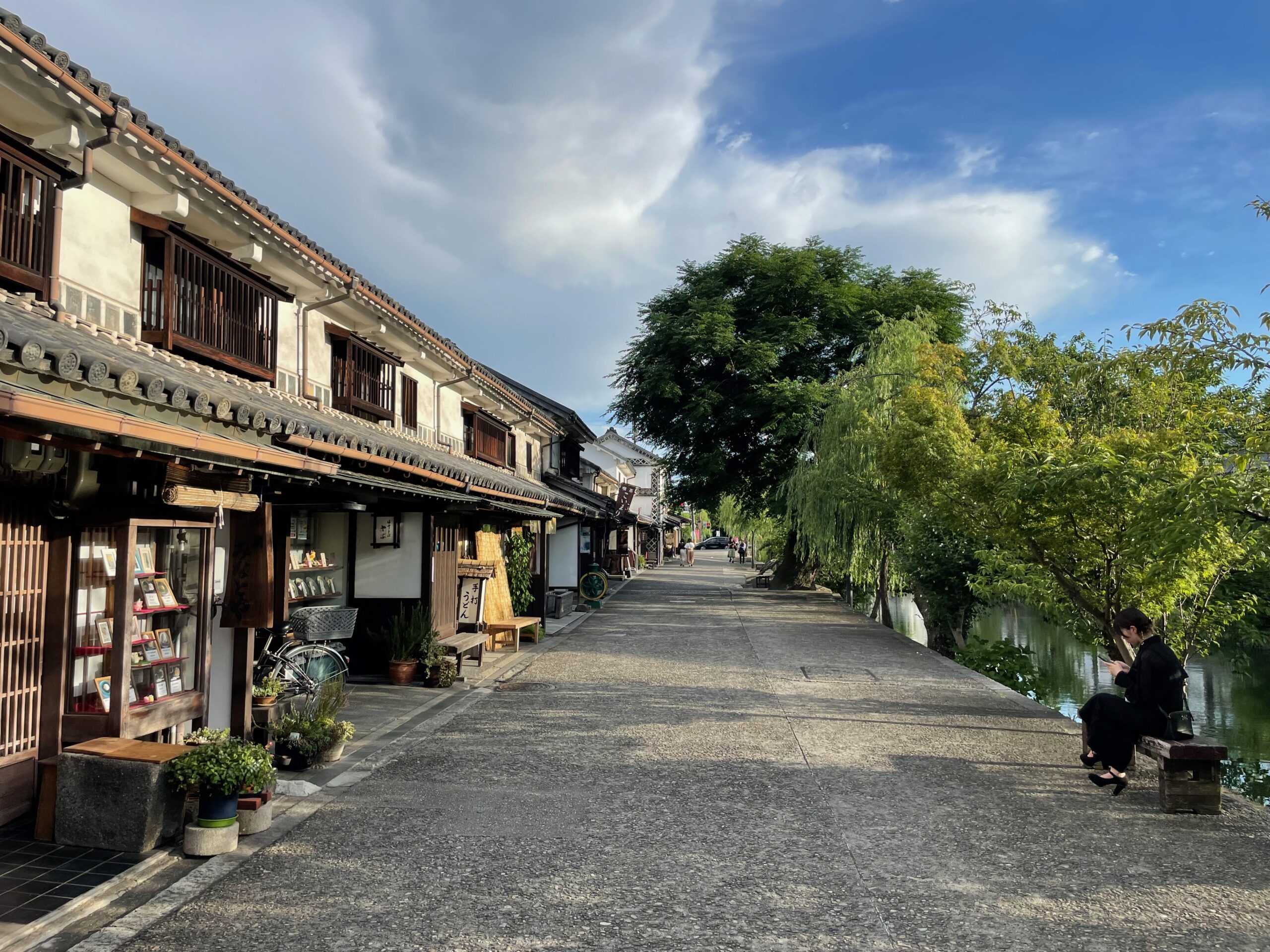
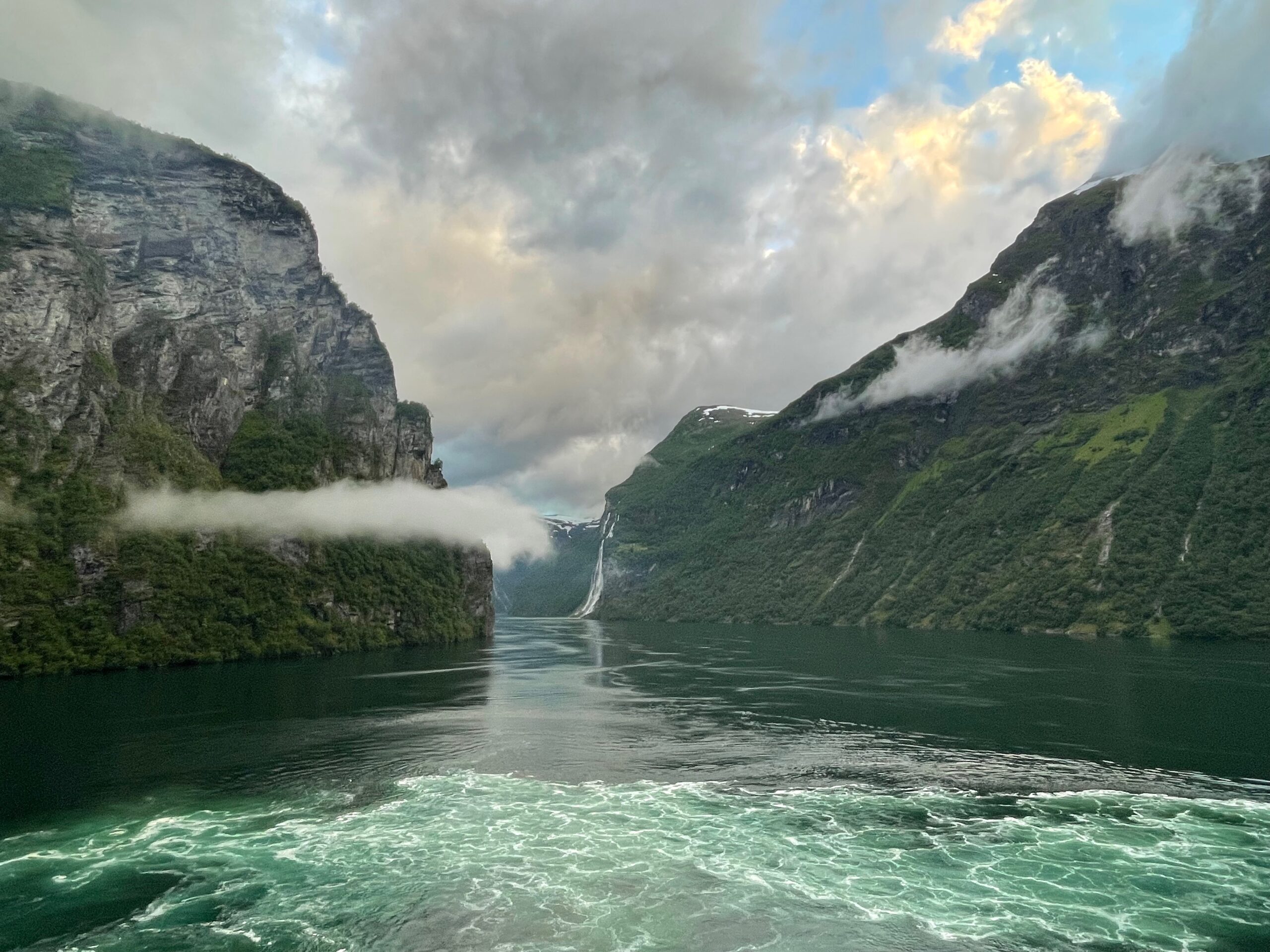
I like the way you approach big cities. I like a lot the Georgian area you wrote about, I love seeing beautiful architecture in historical towns and this neighborhood looks so smart and stylish 🙂
I was checking the prices for hotels in Dublin and they’re so expensive! Hope to find better deals outside of the season.
This itinerary is very intense! I like how you used public transport, I’d be too scared to ride the left hand side, too confusing for me:D
I’ll definitely put some countryside and cliffs walks as you did :)))